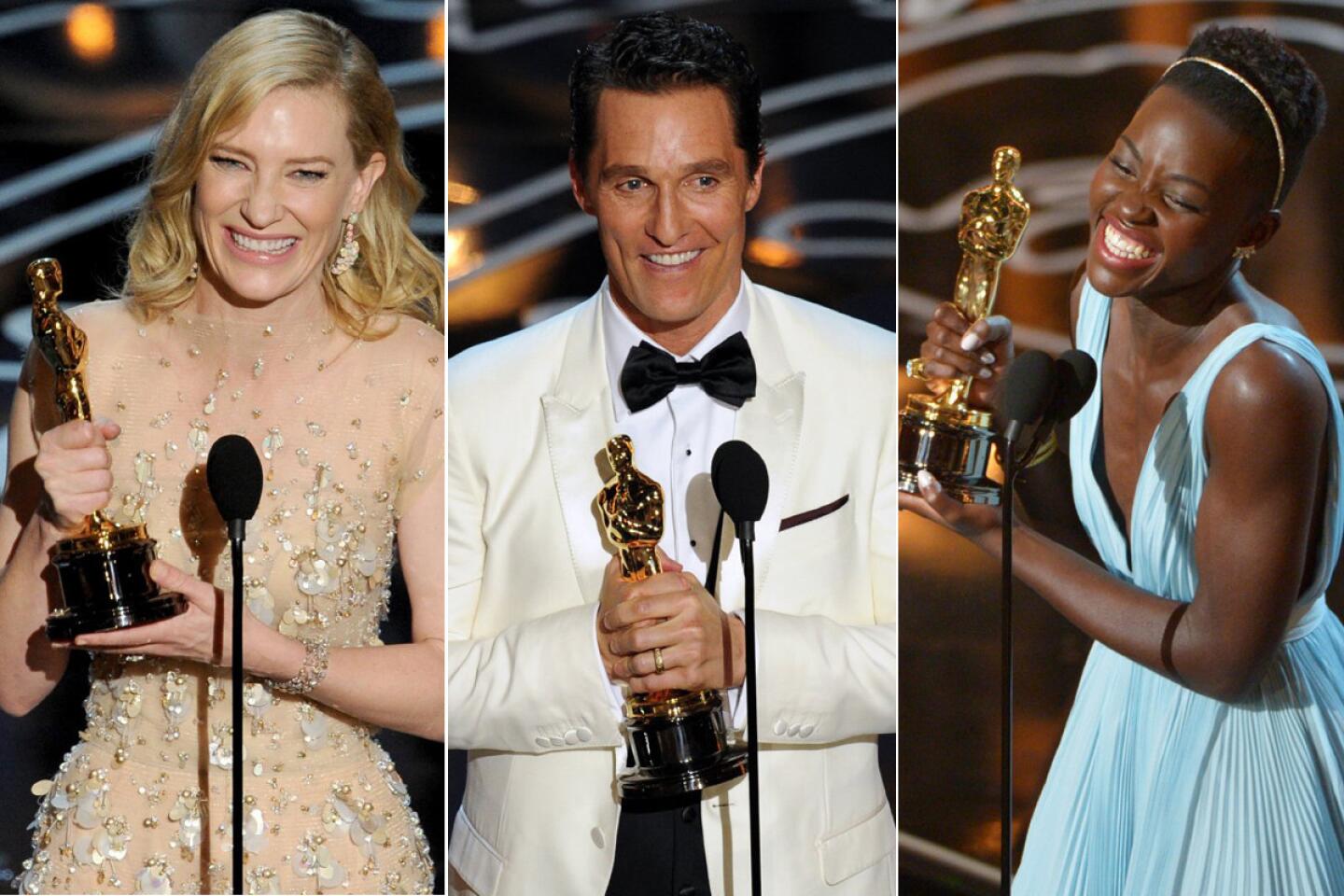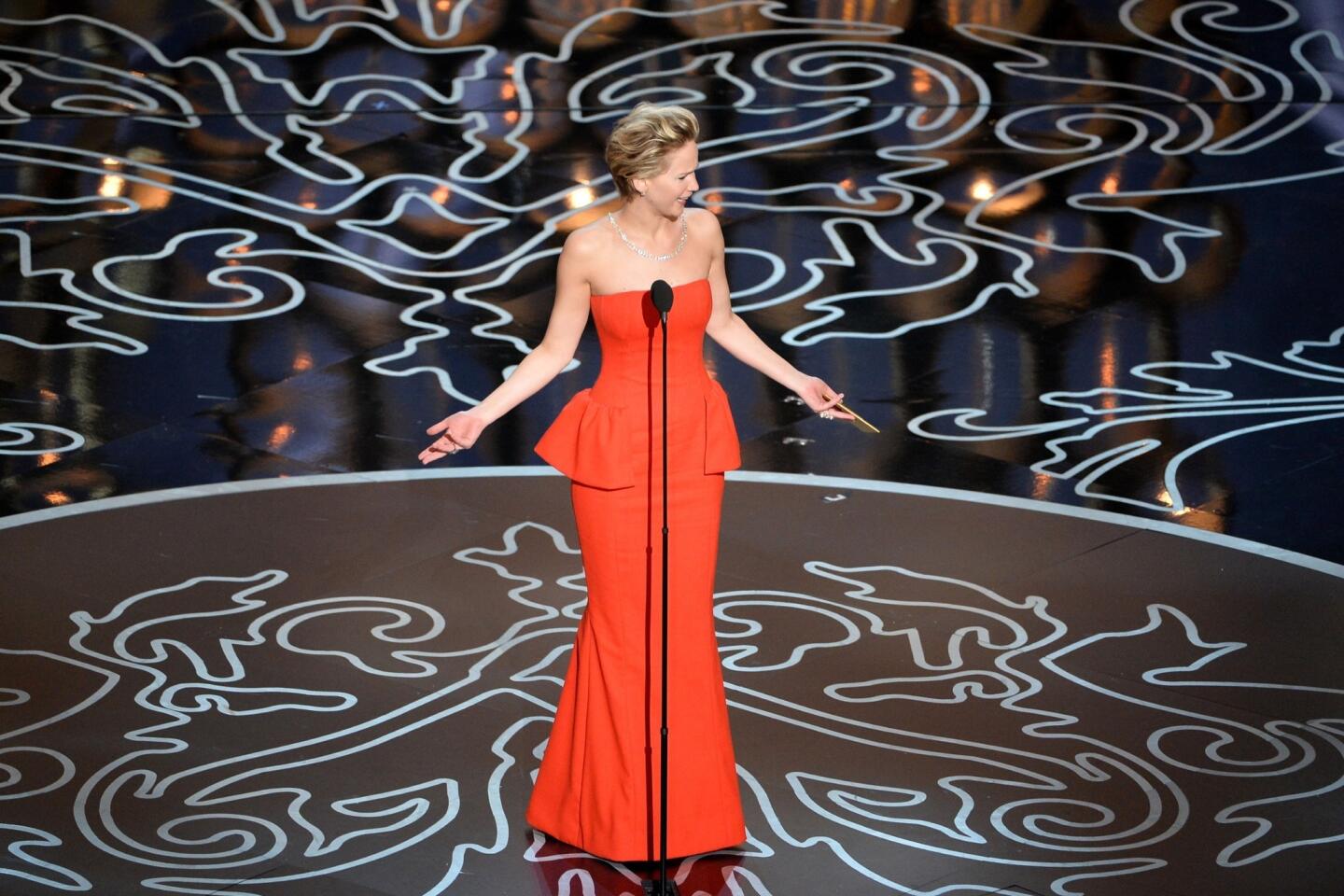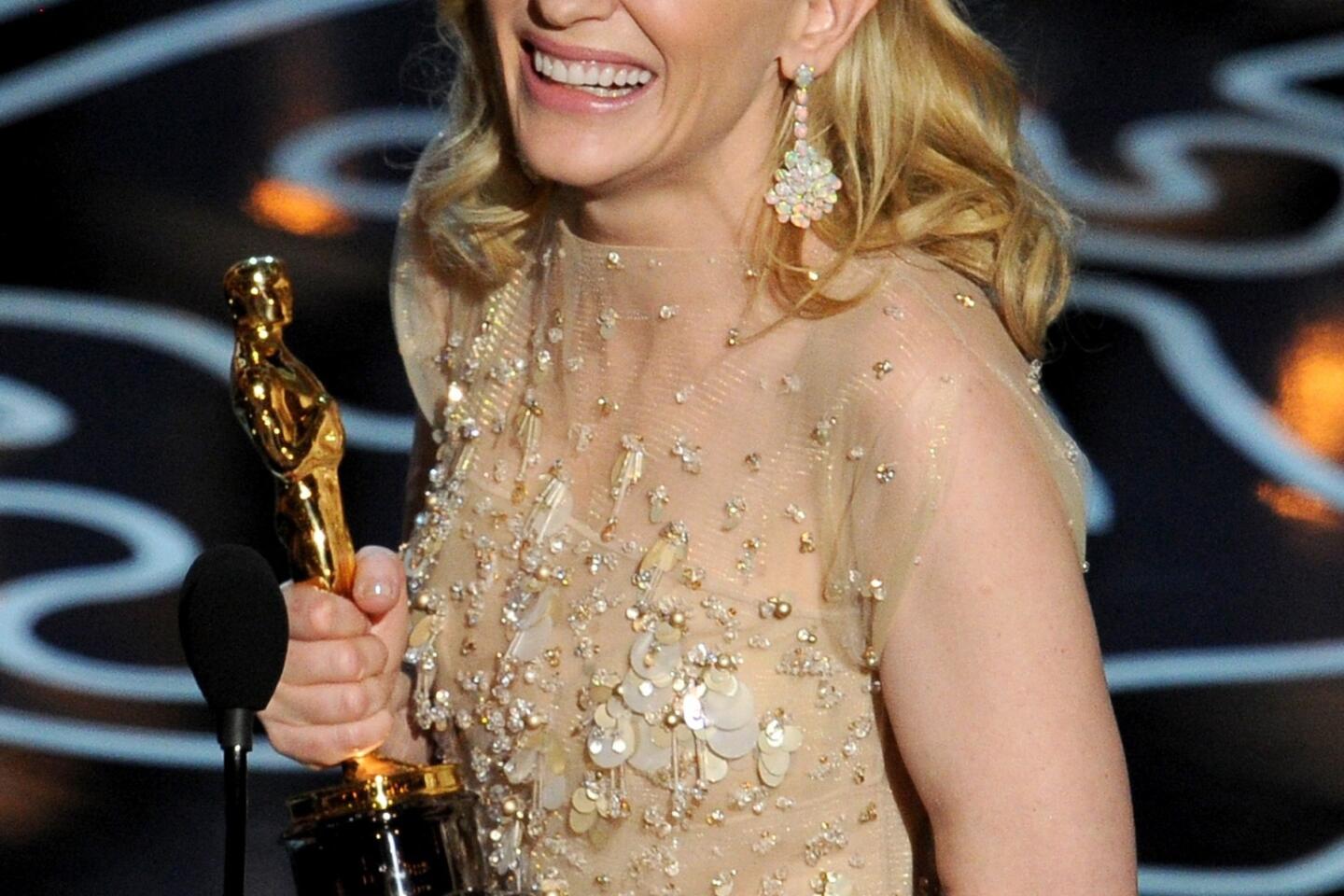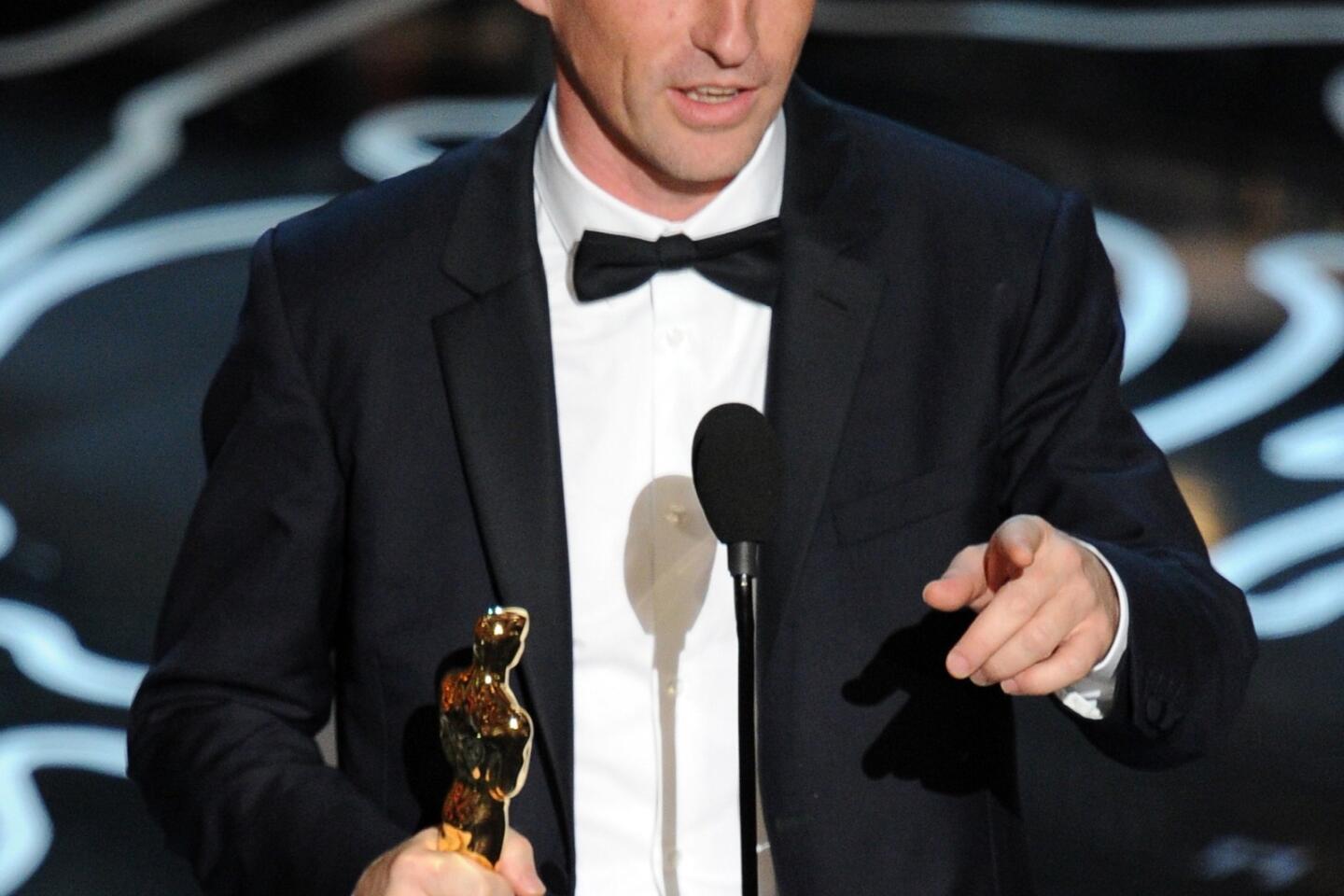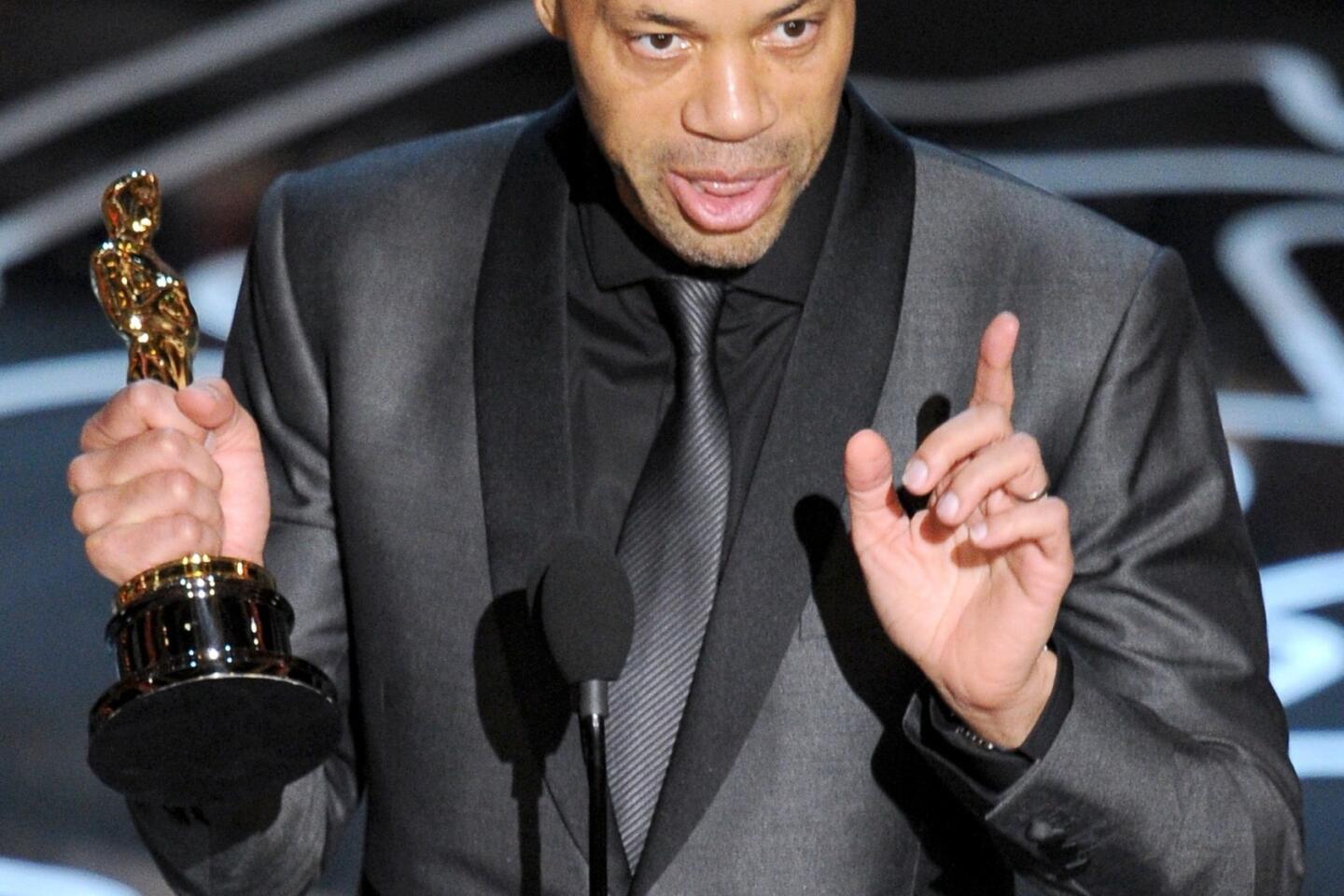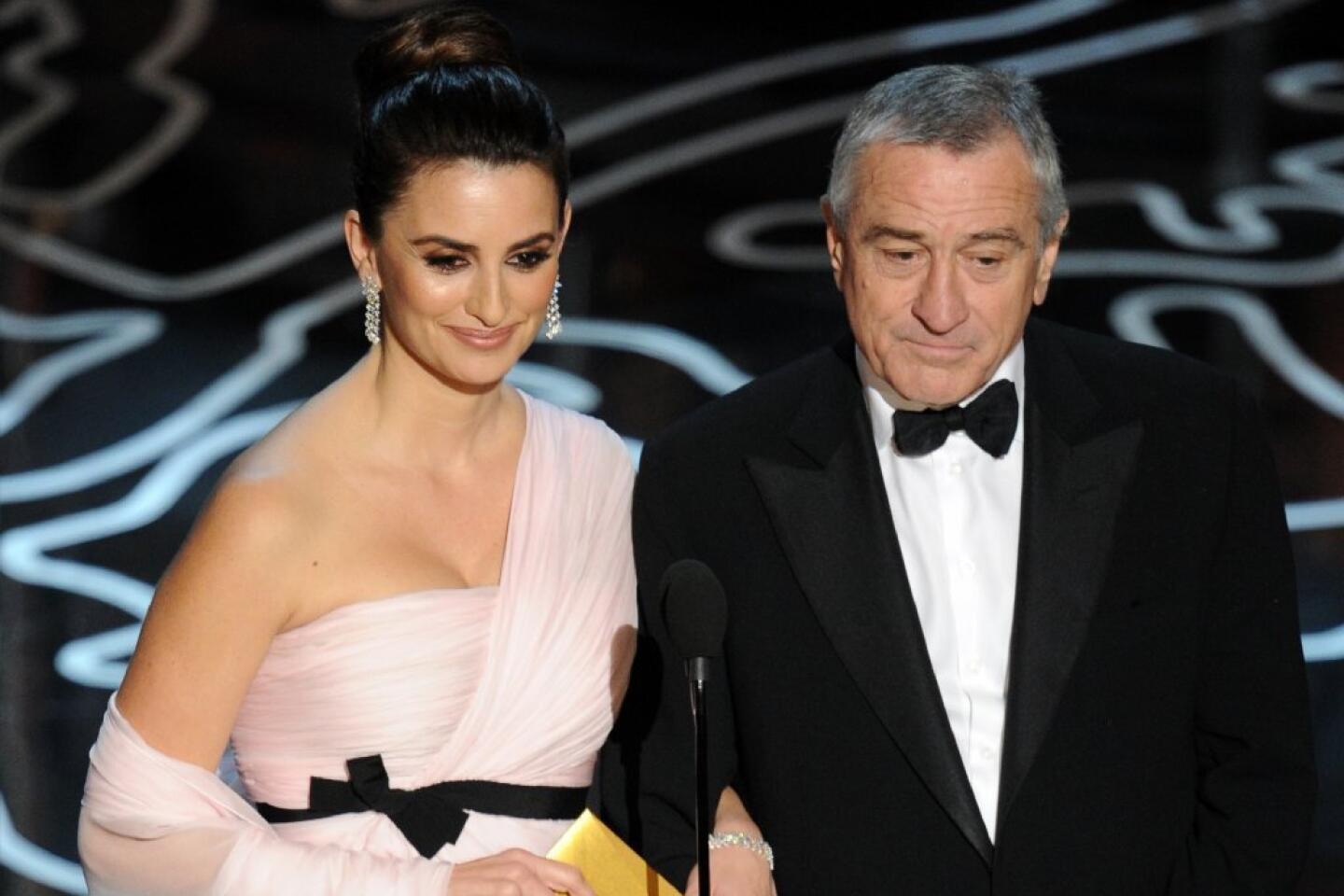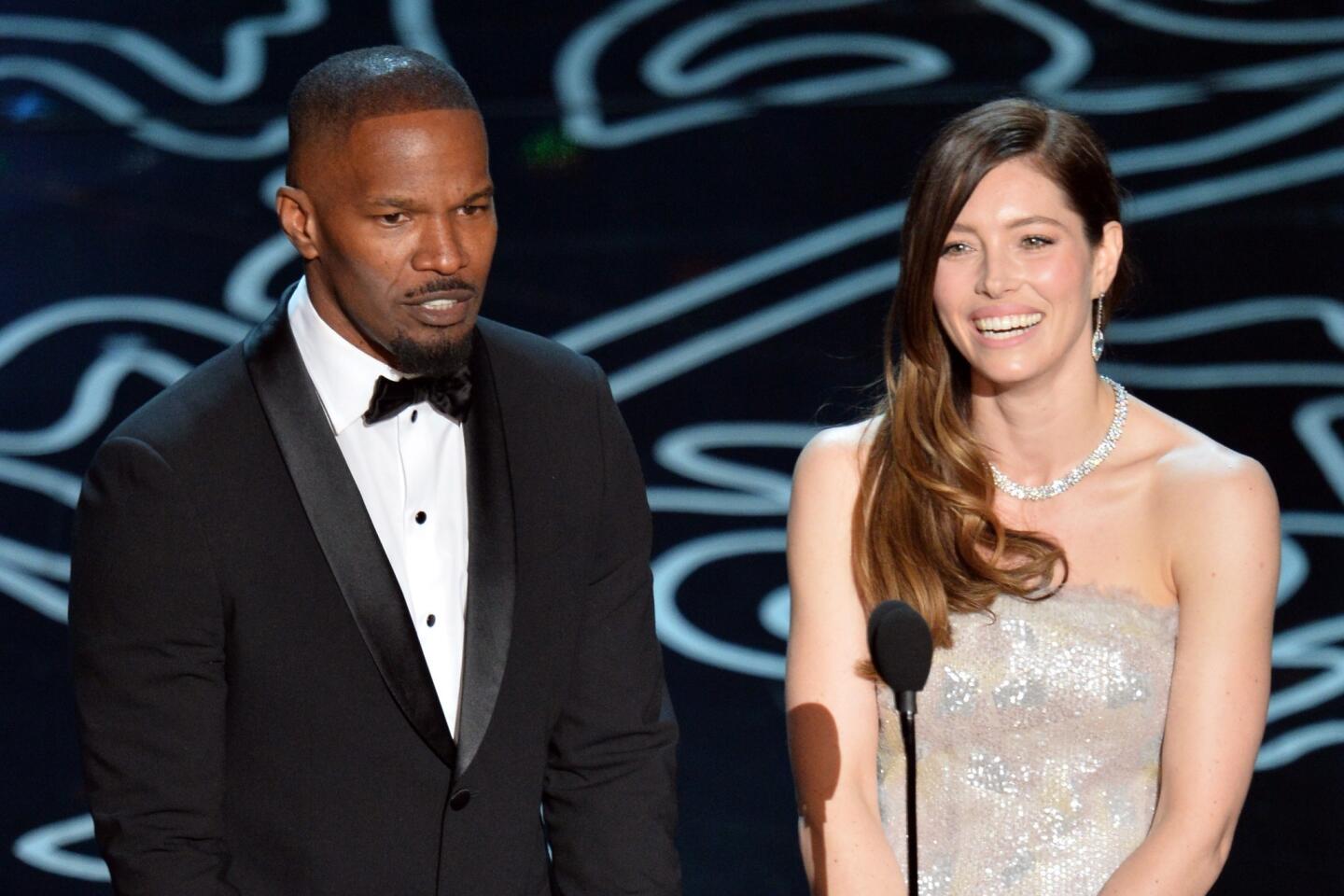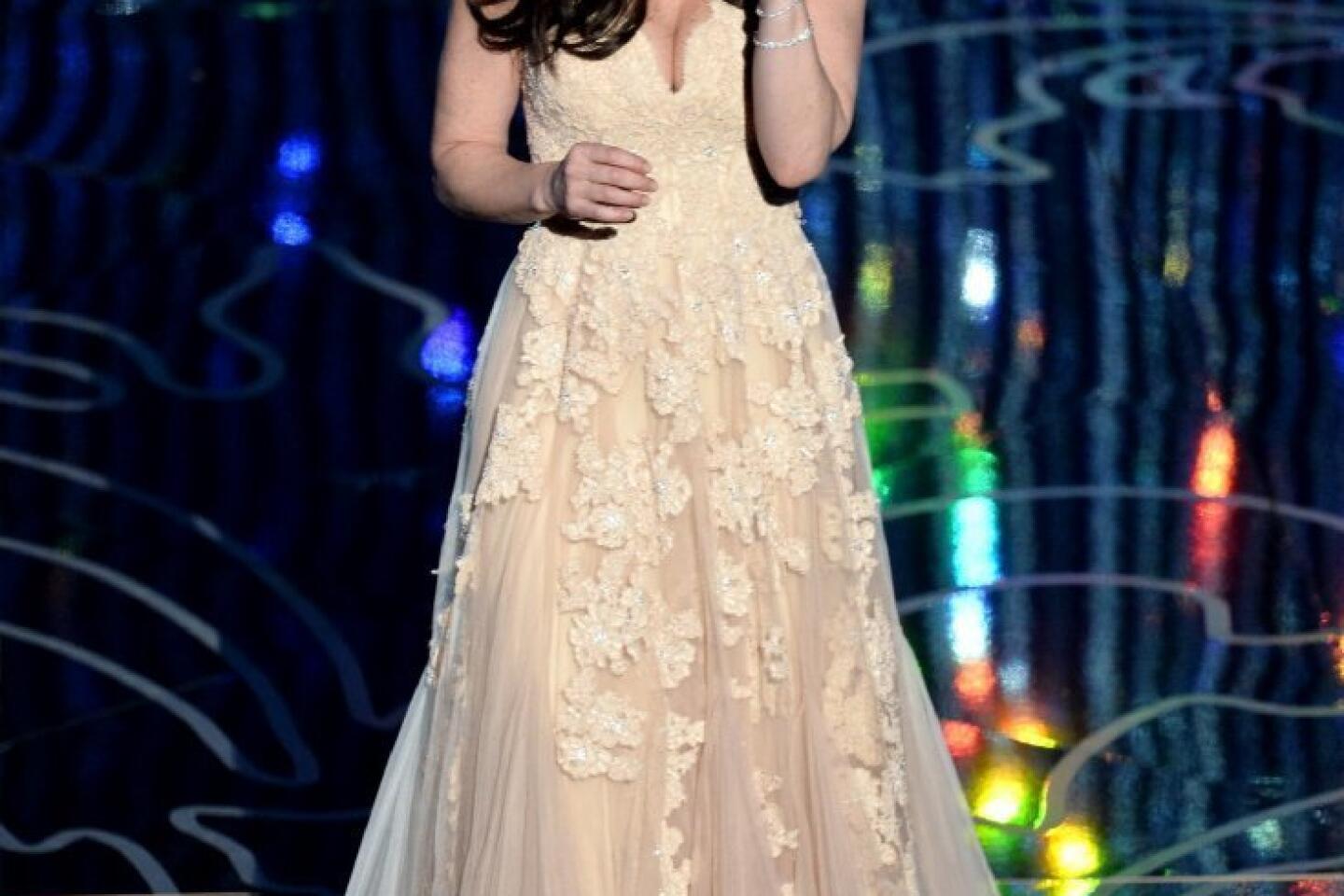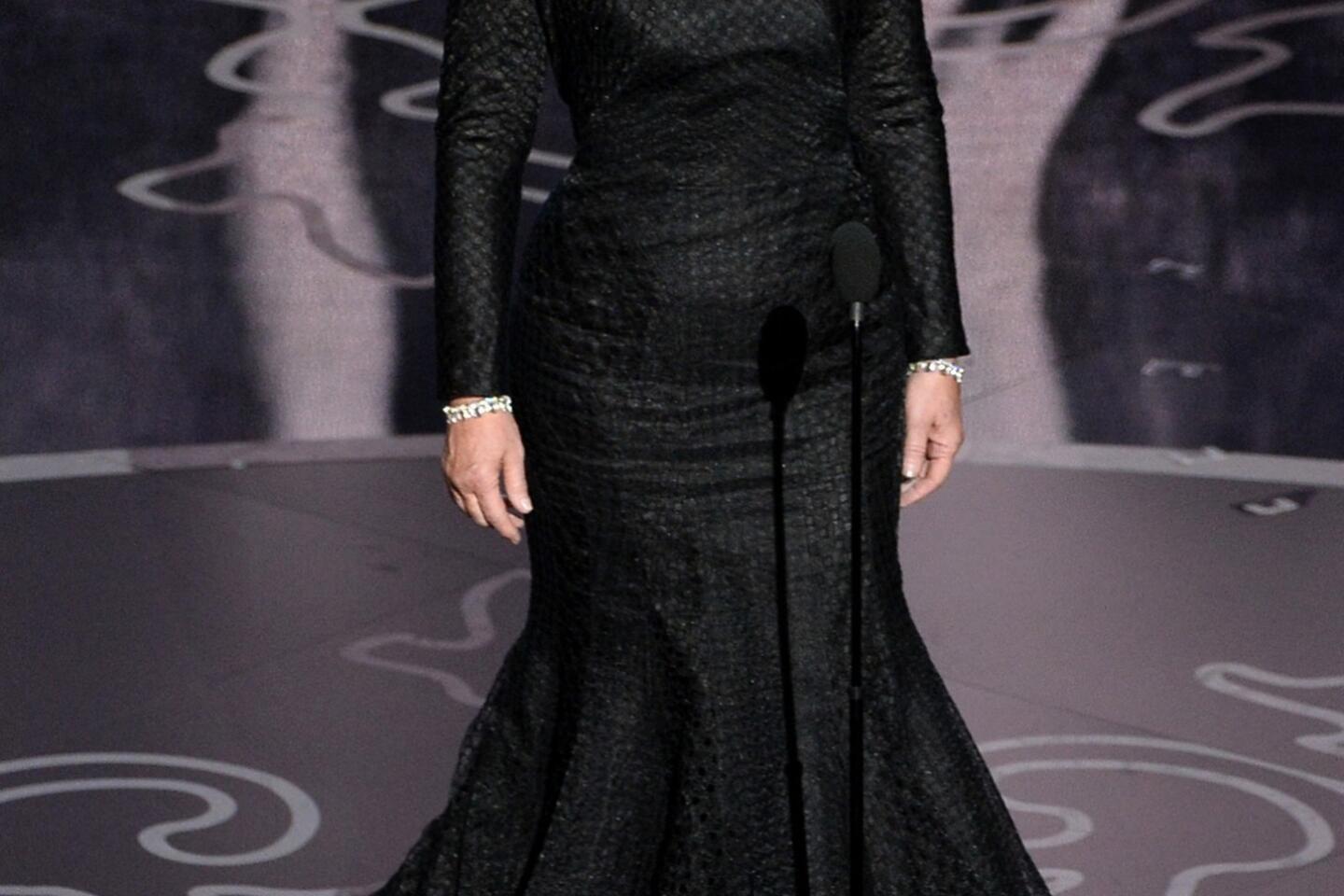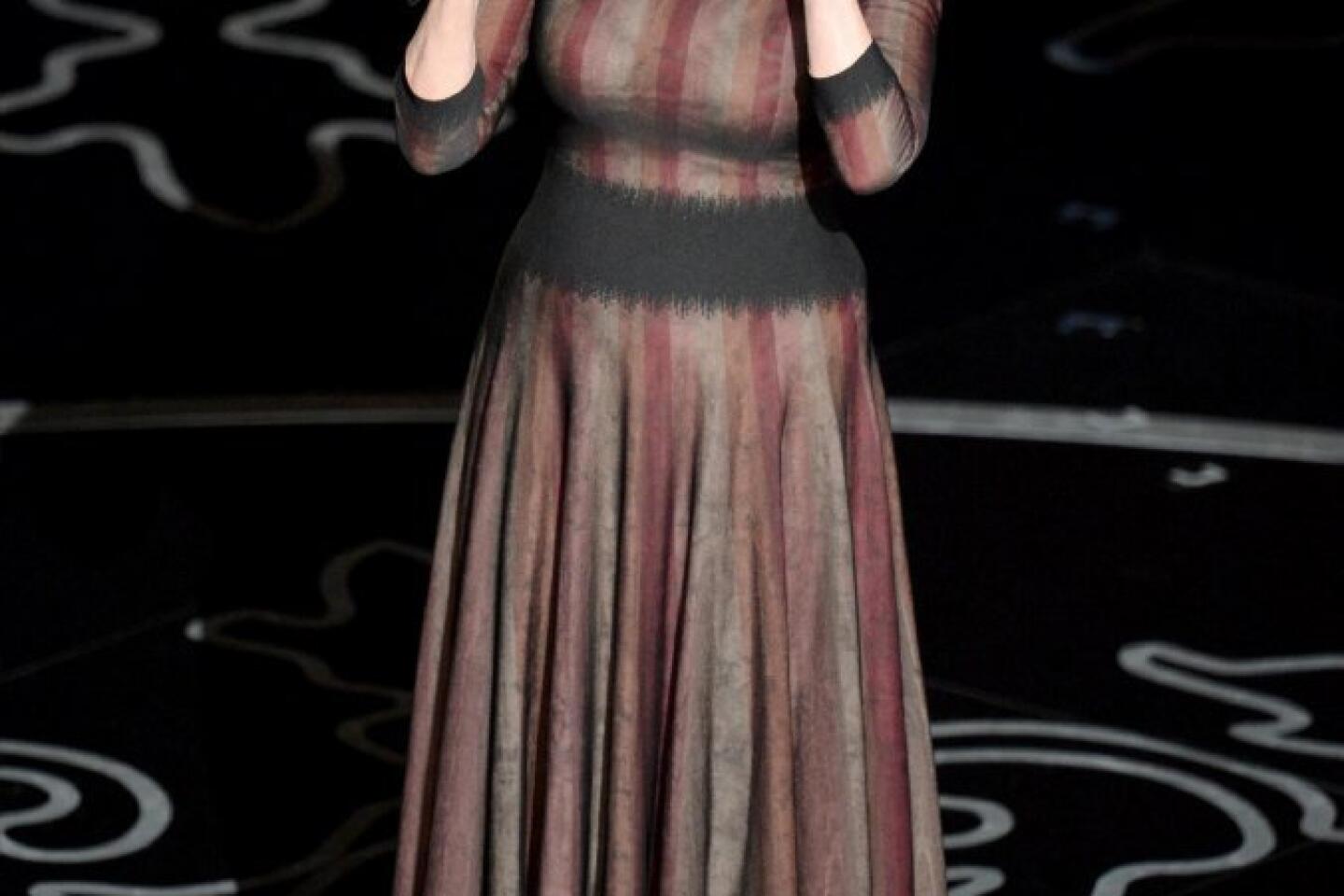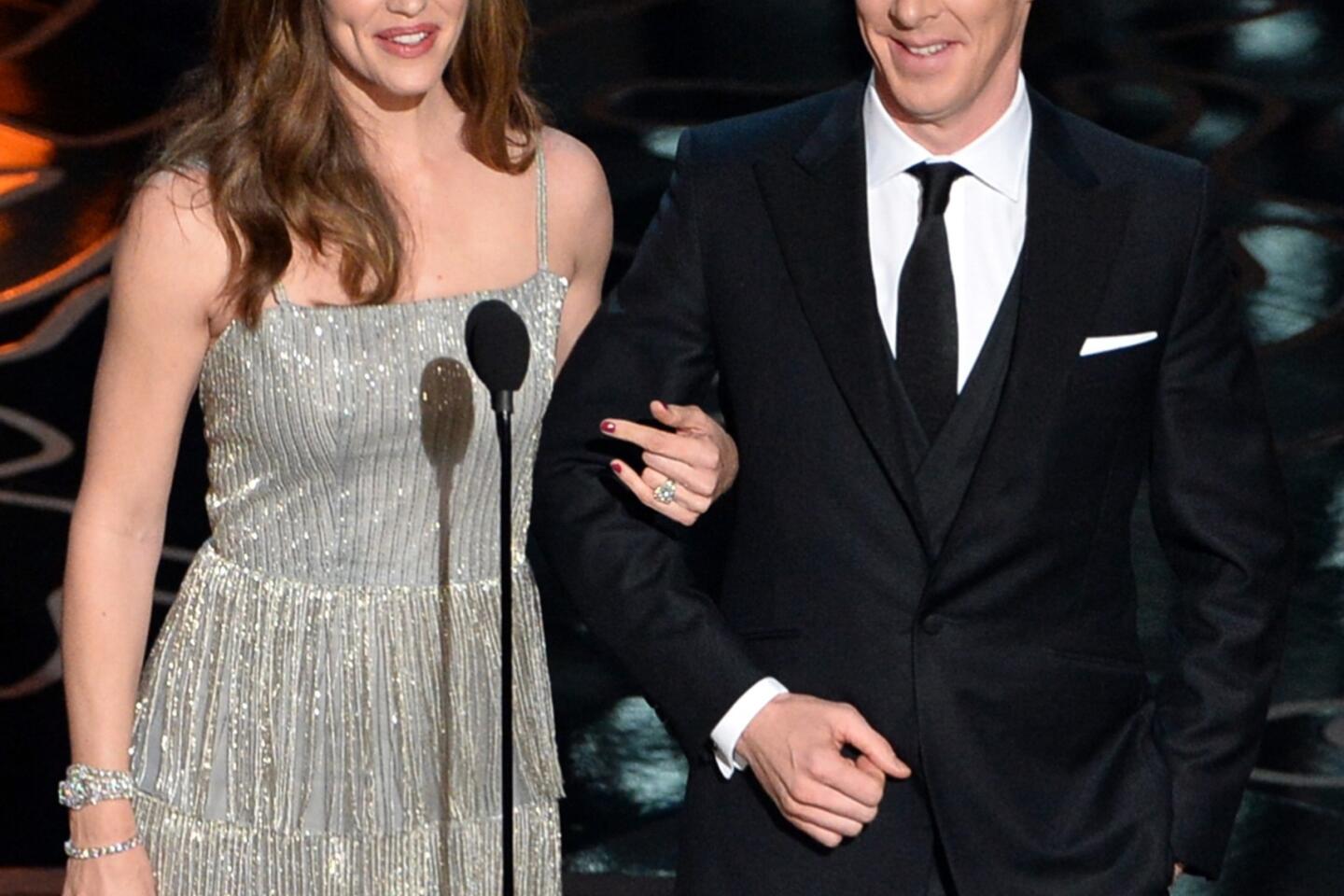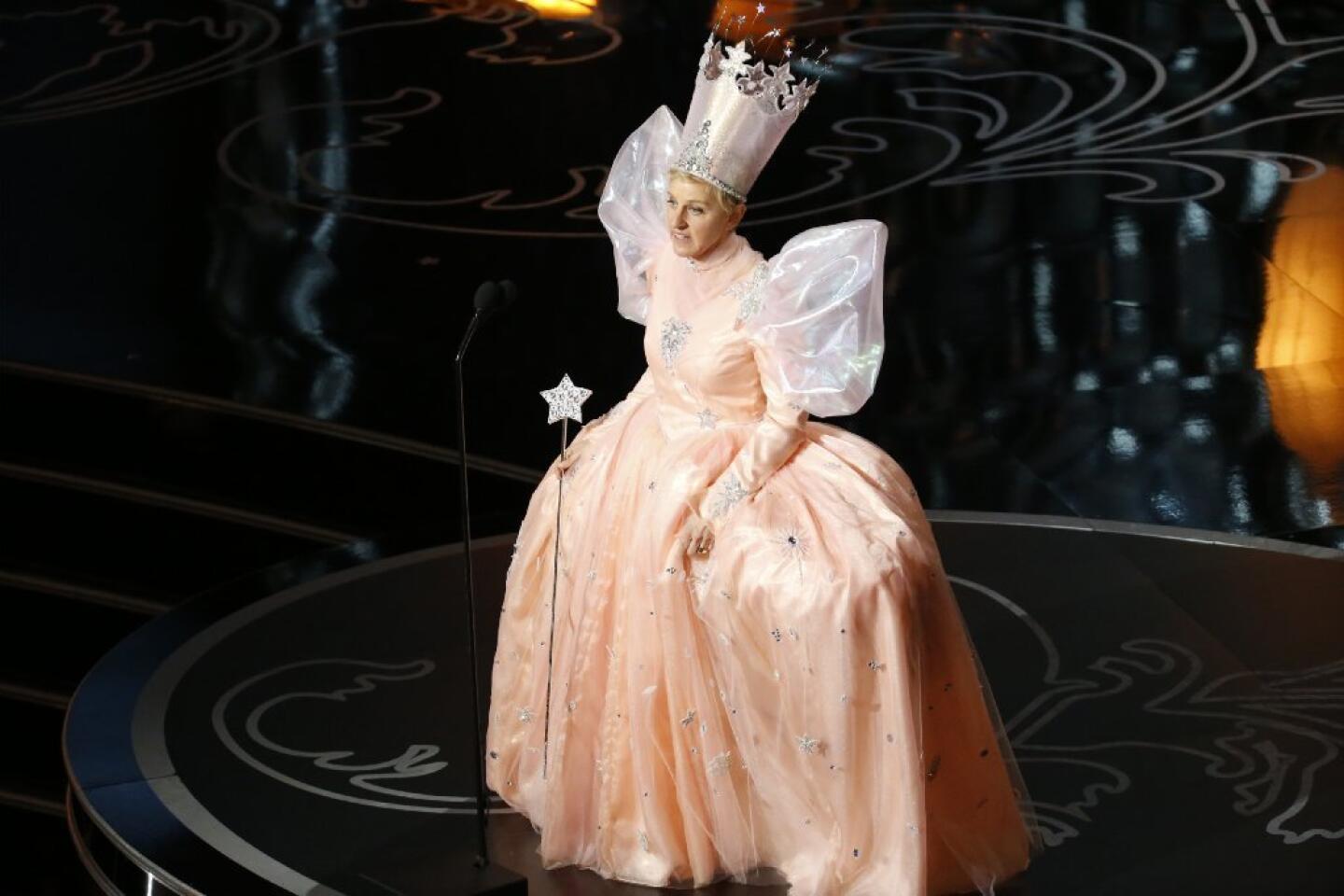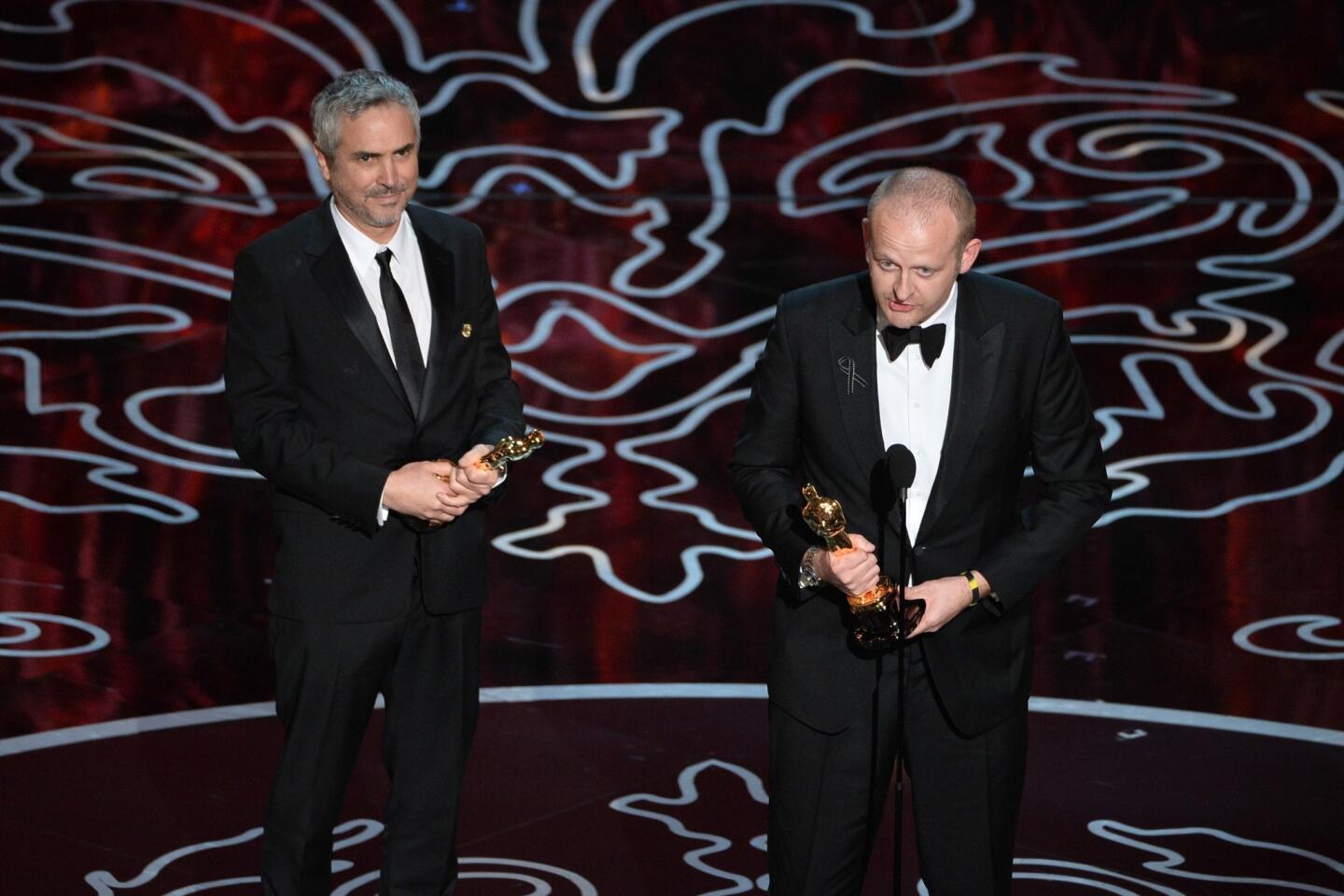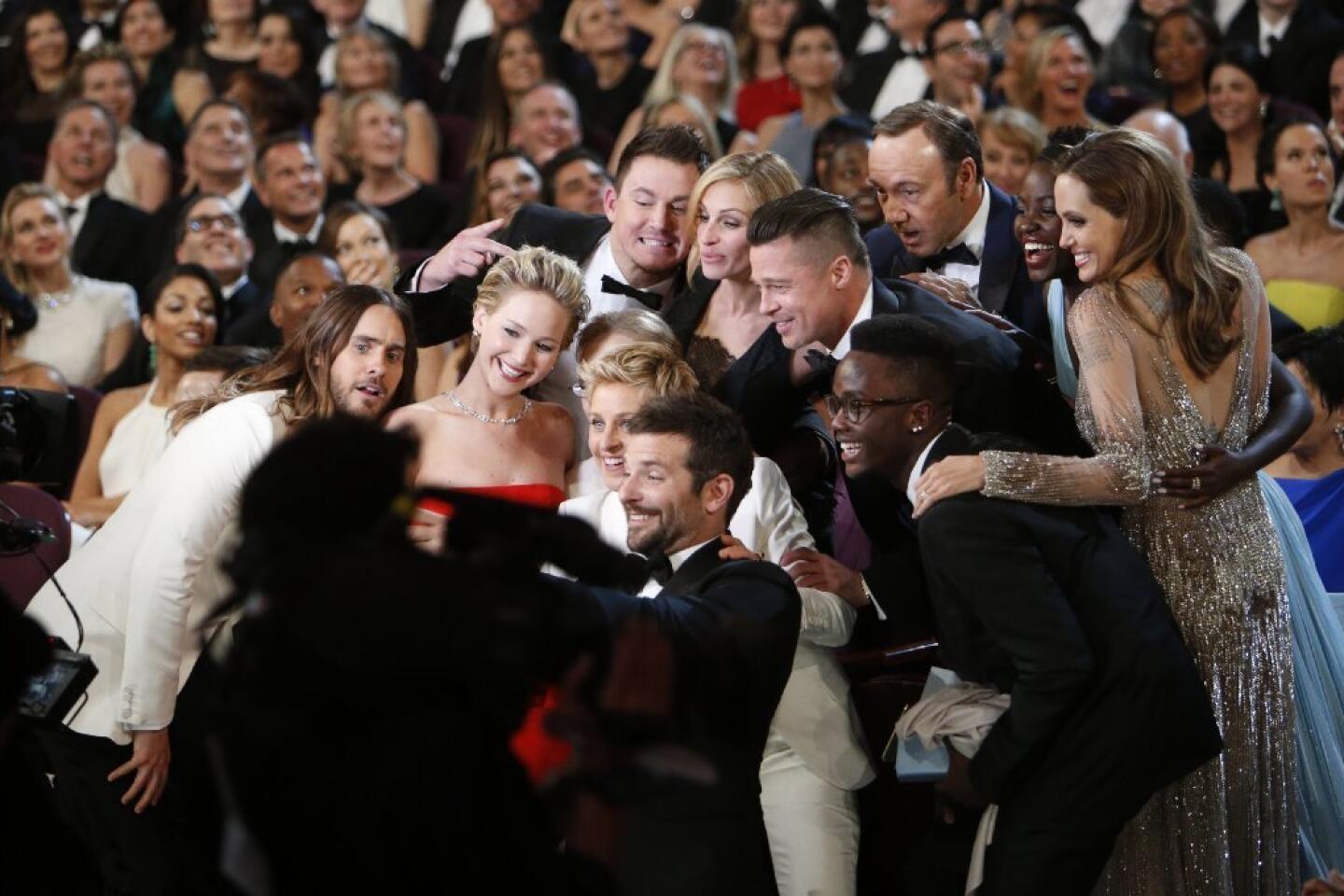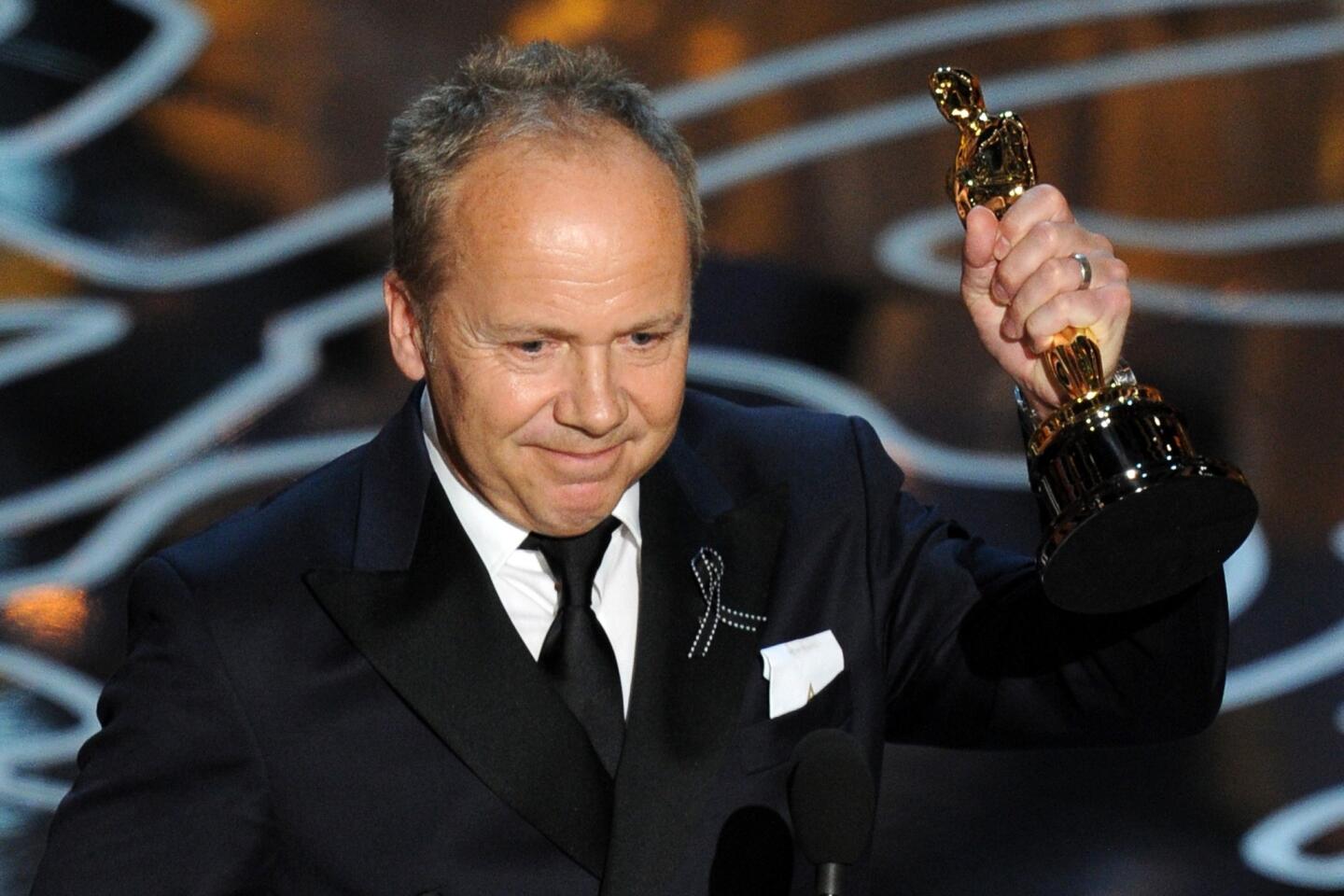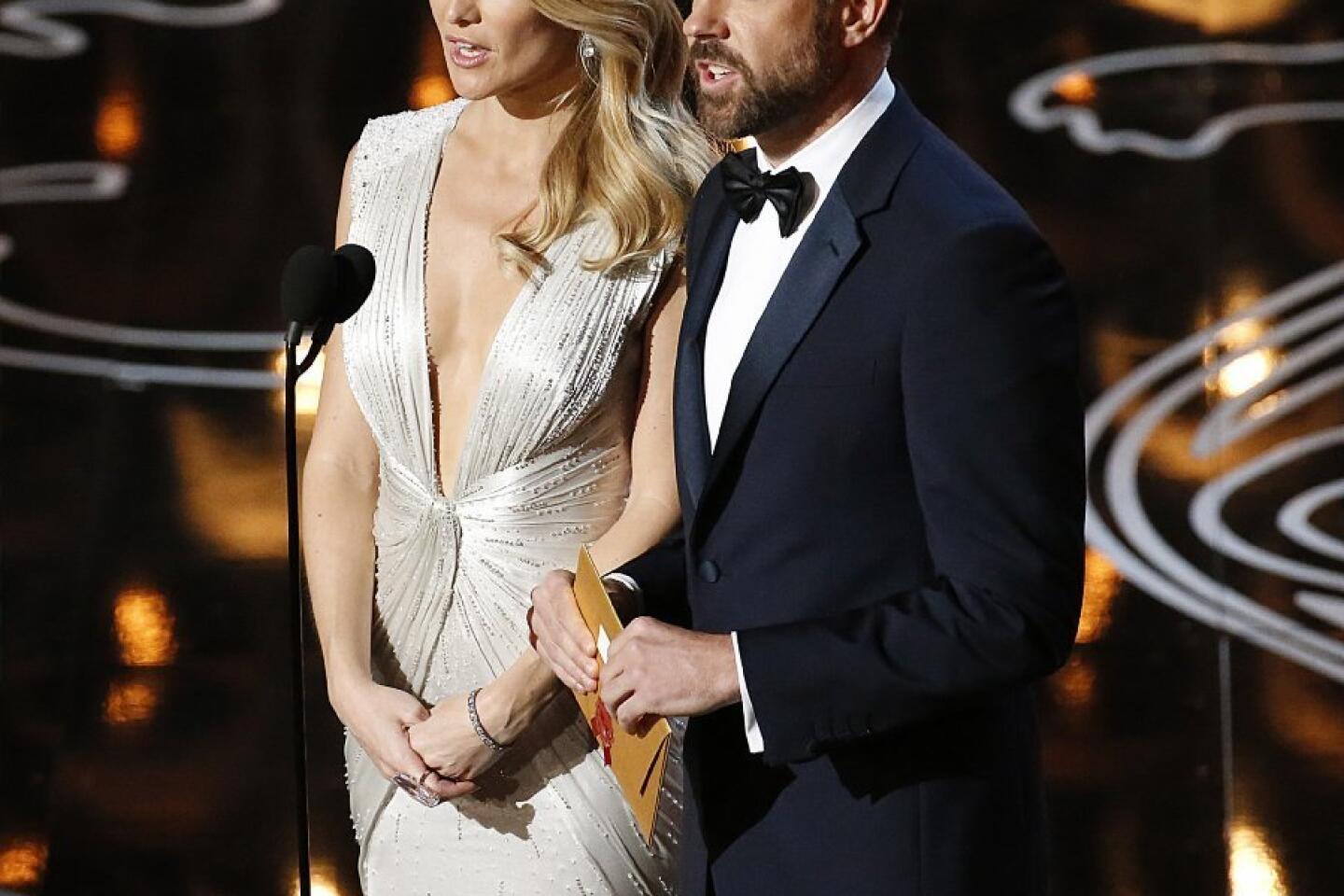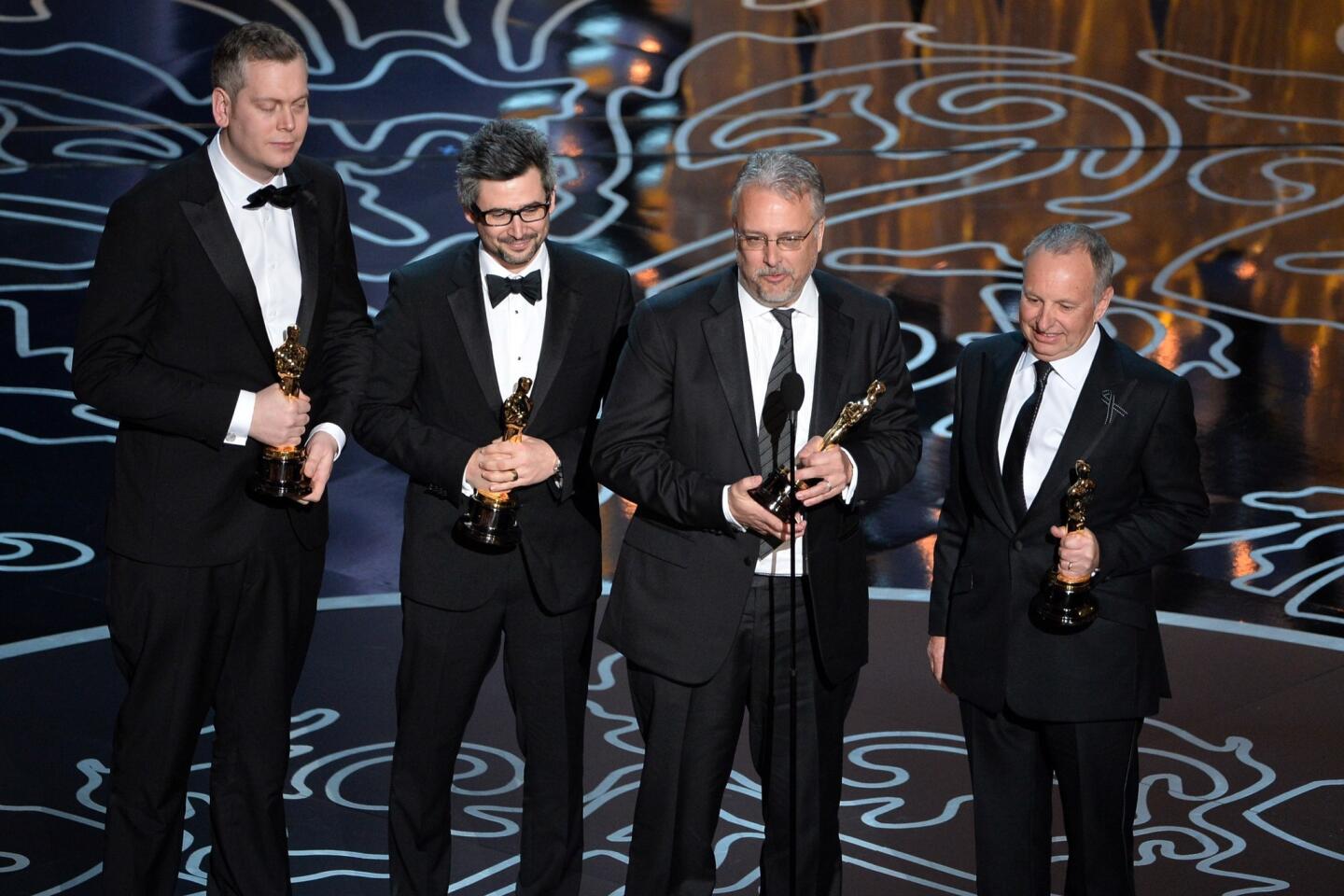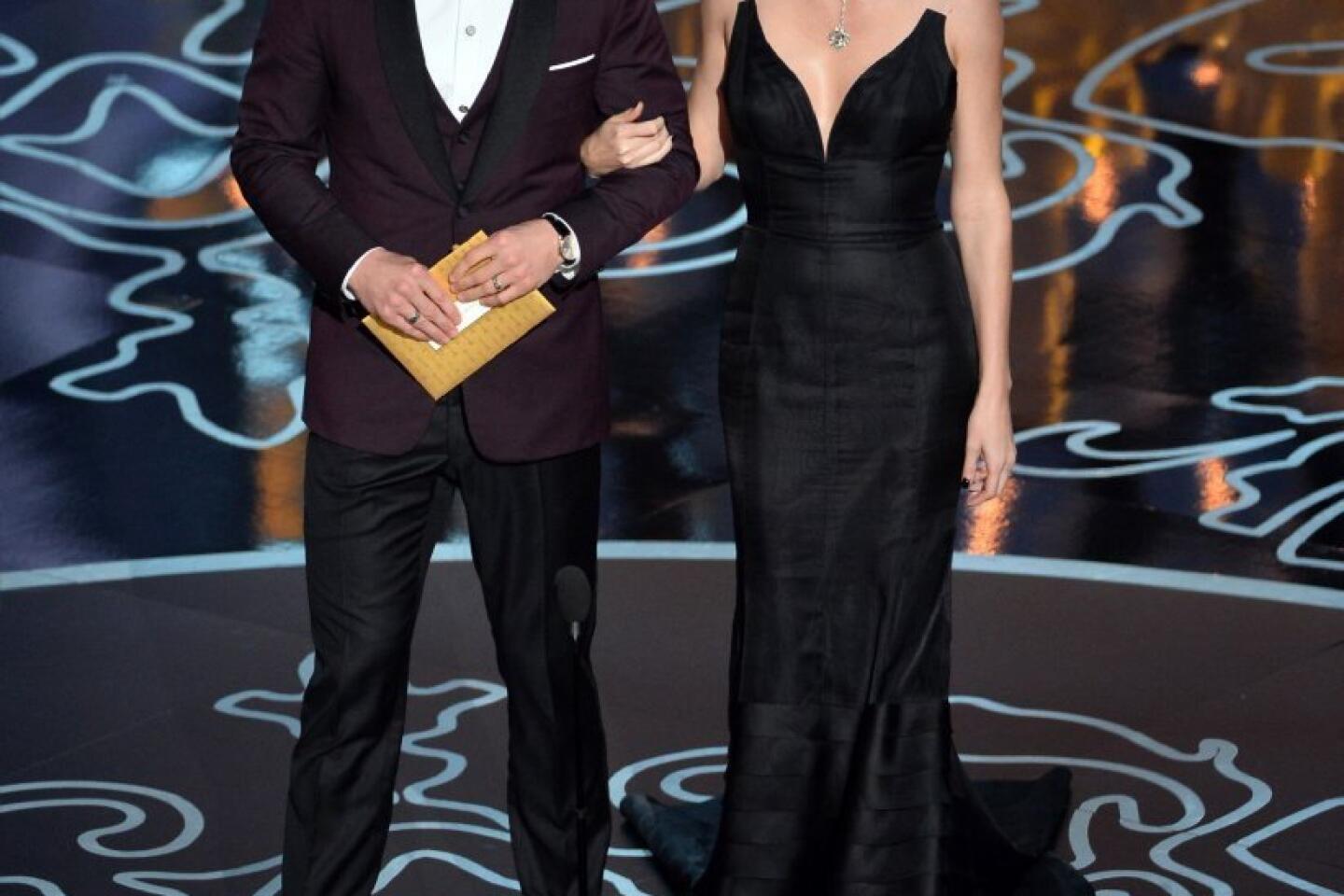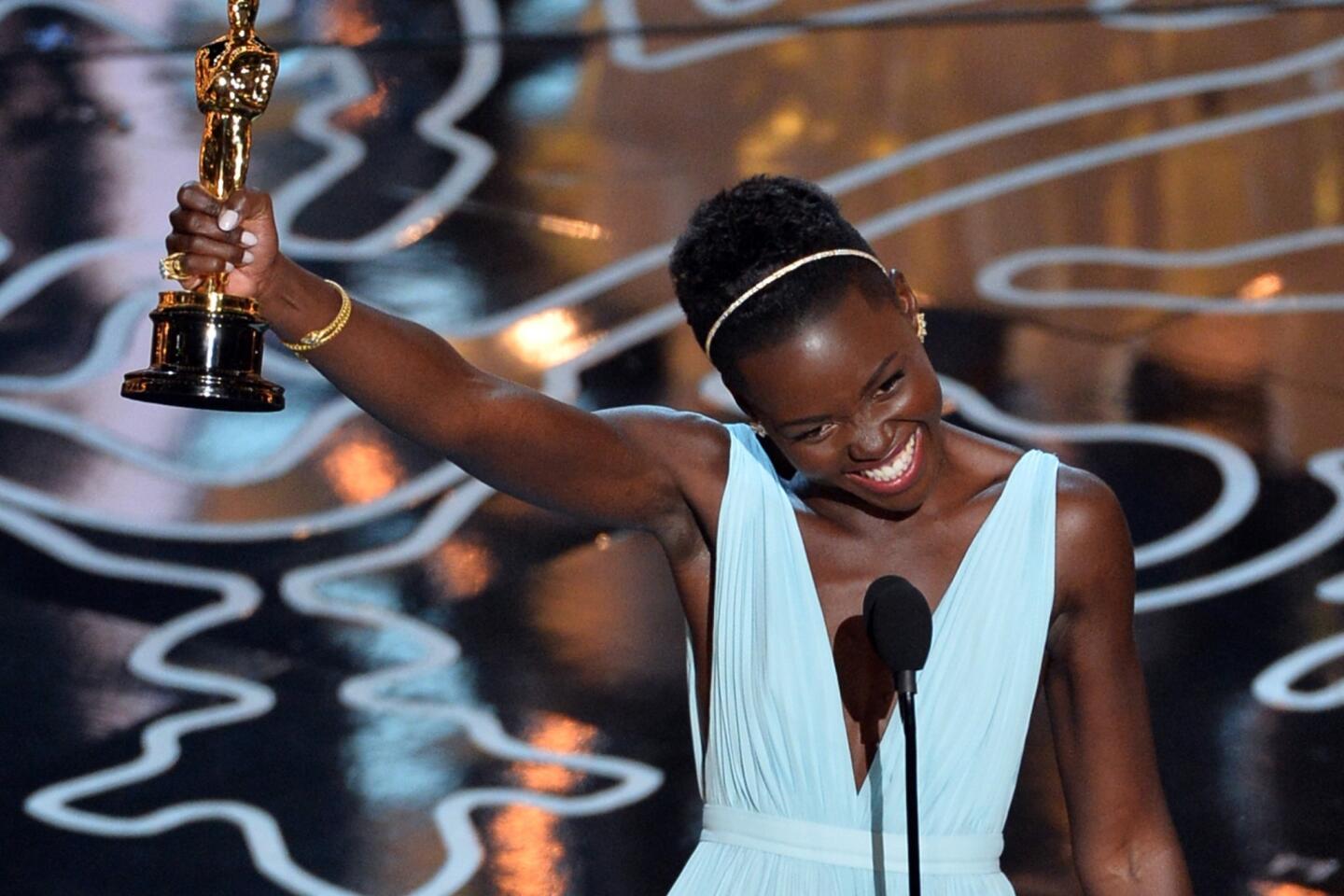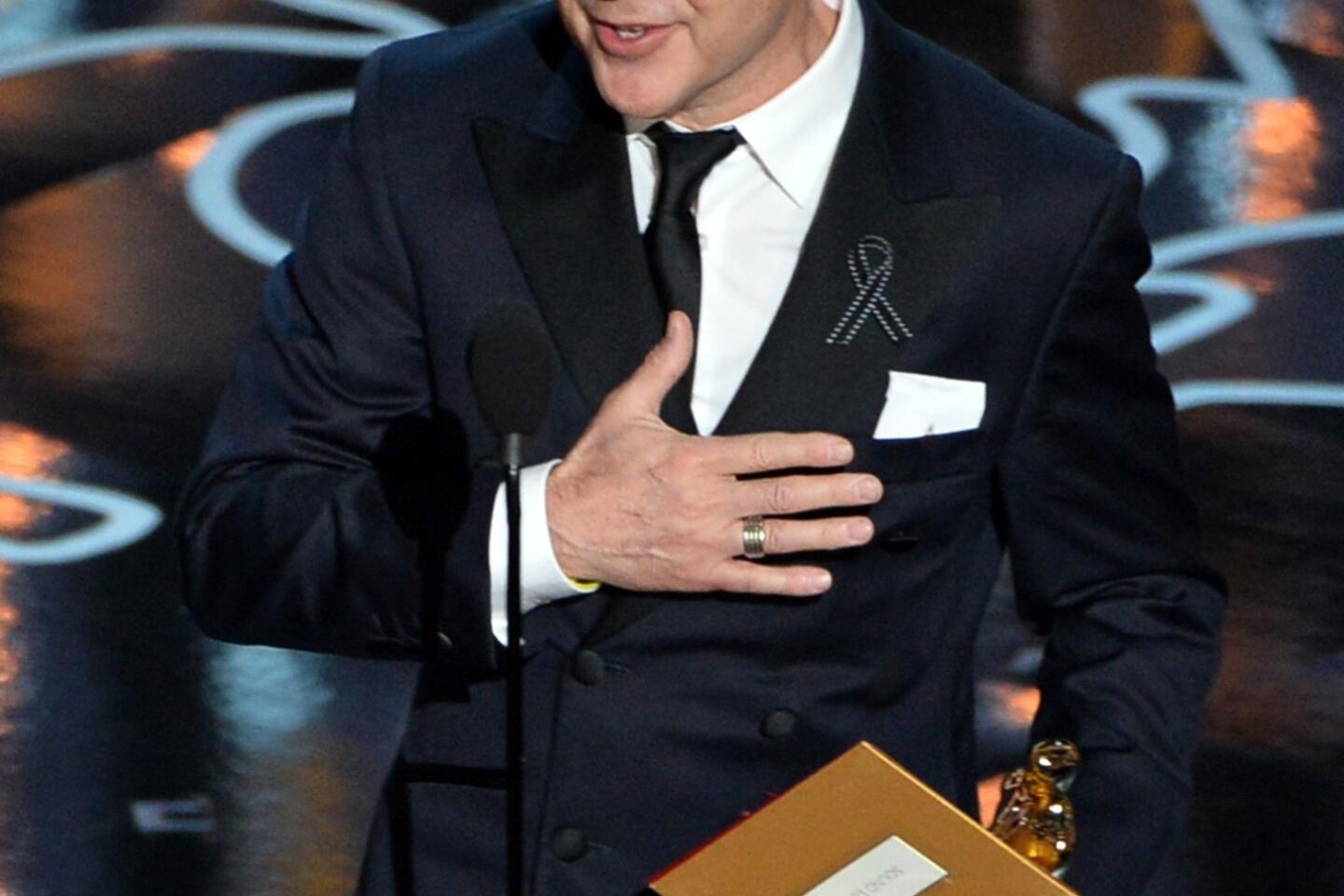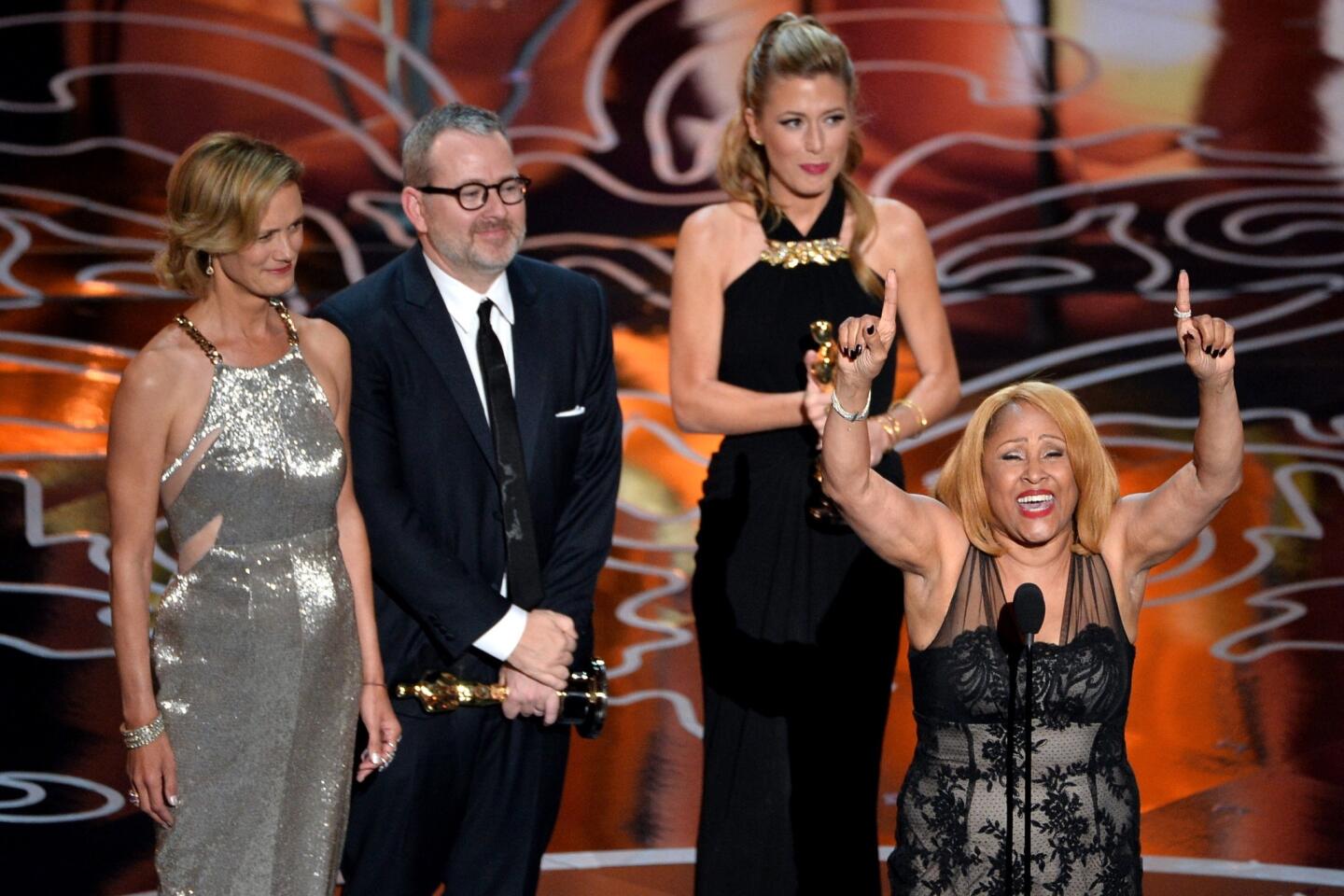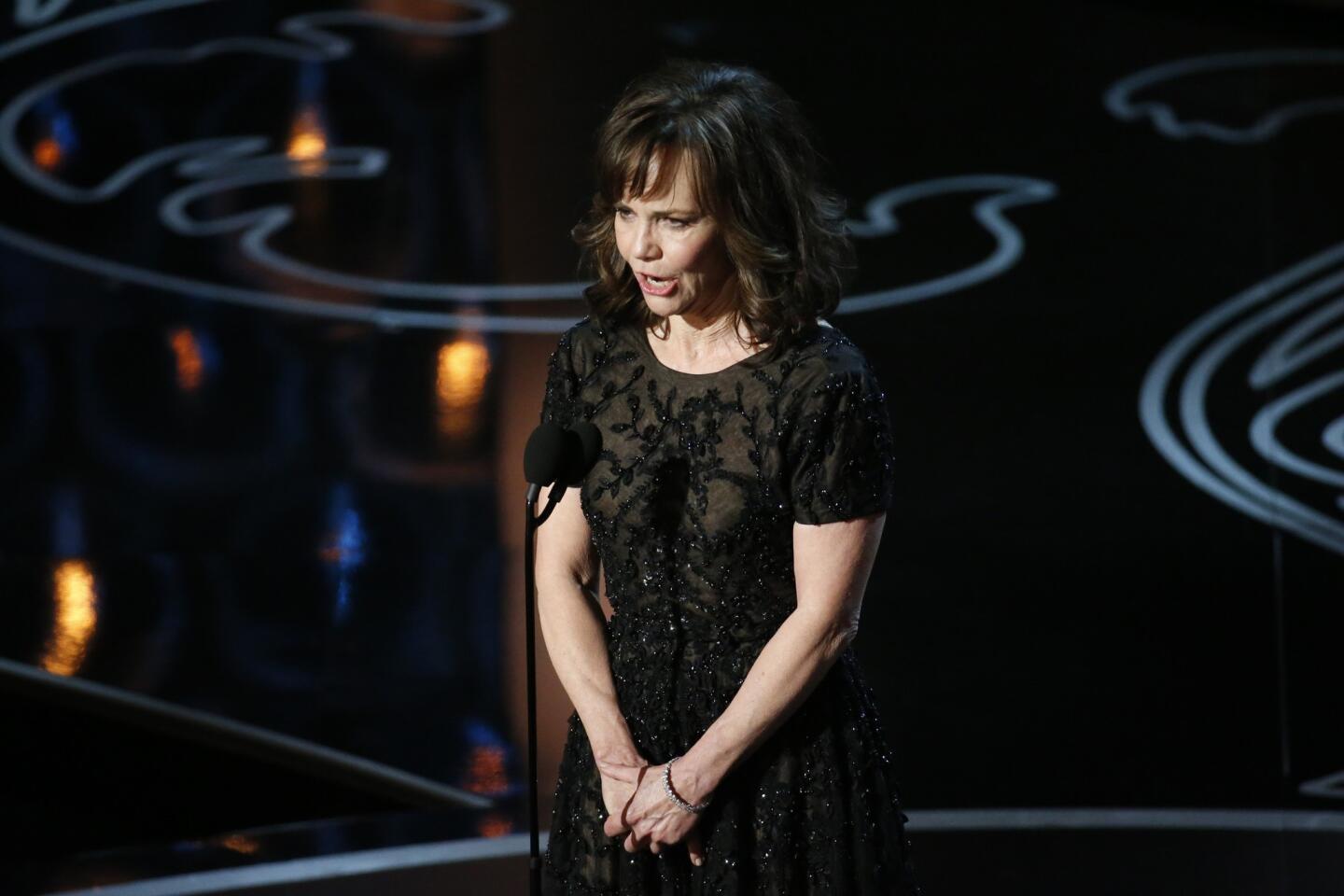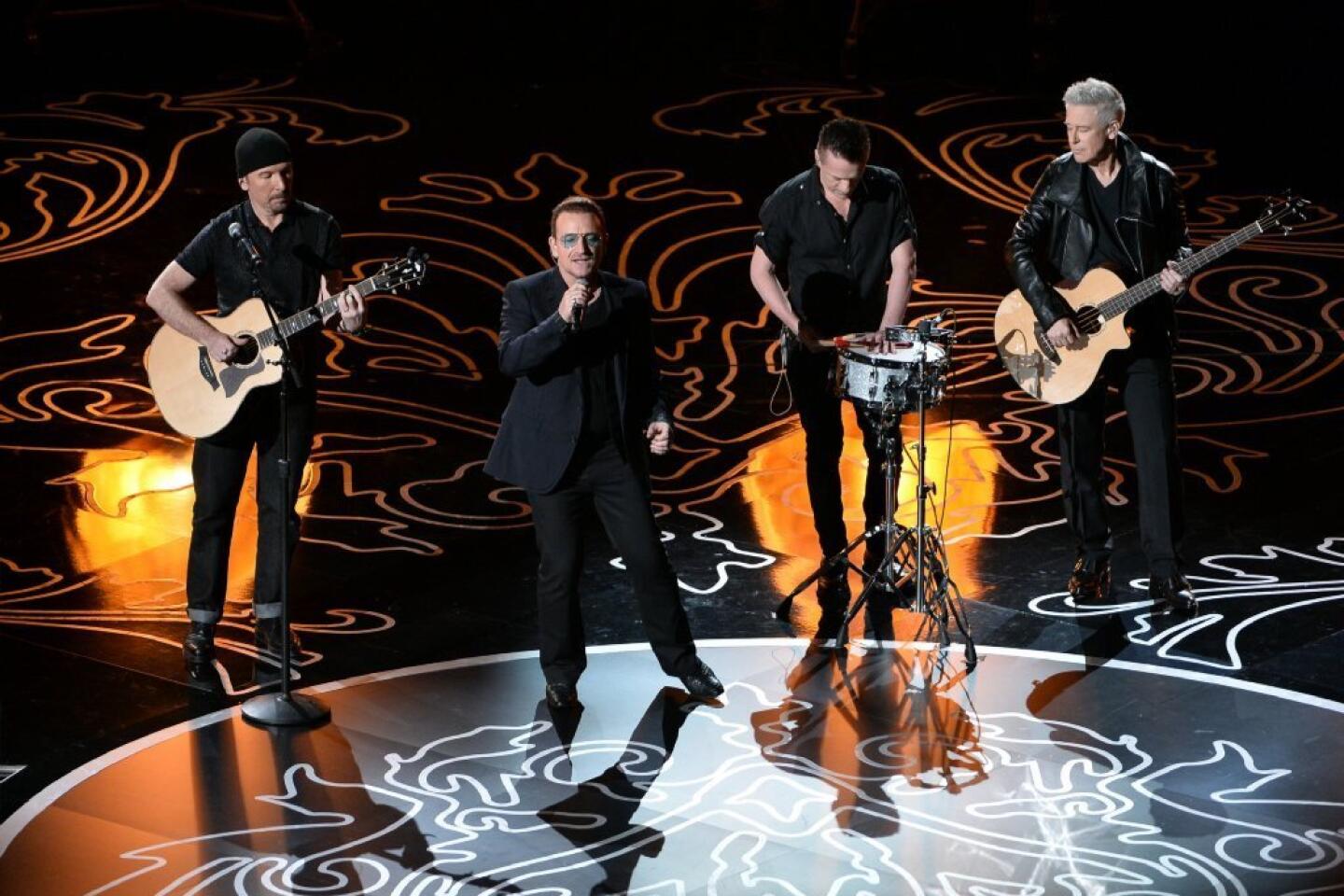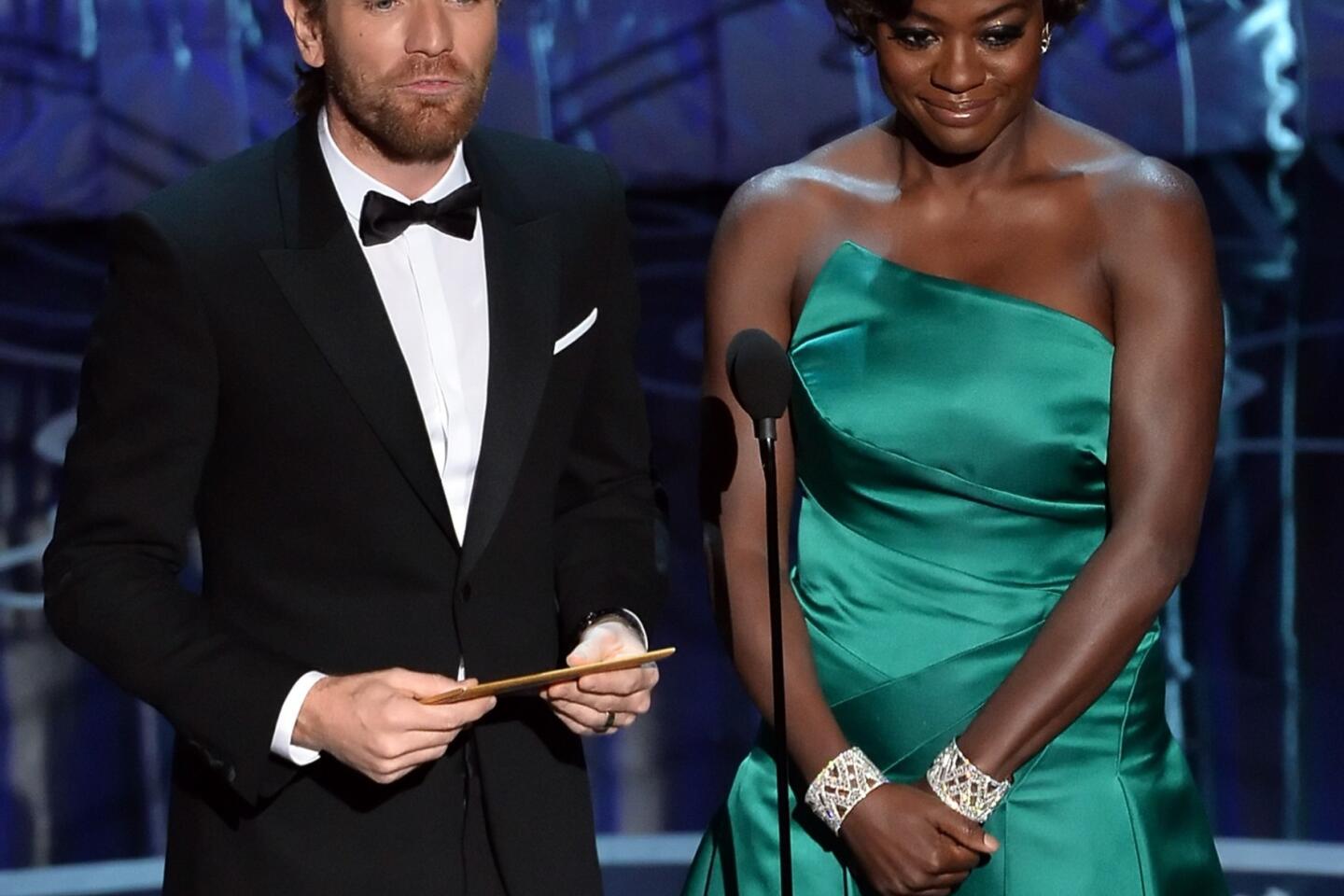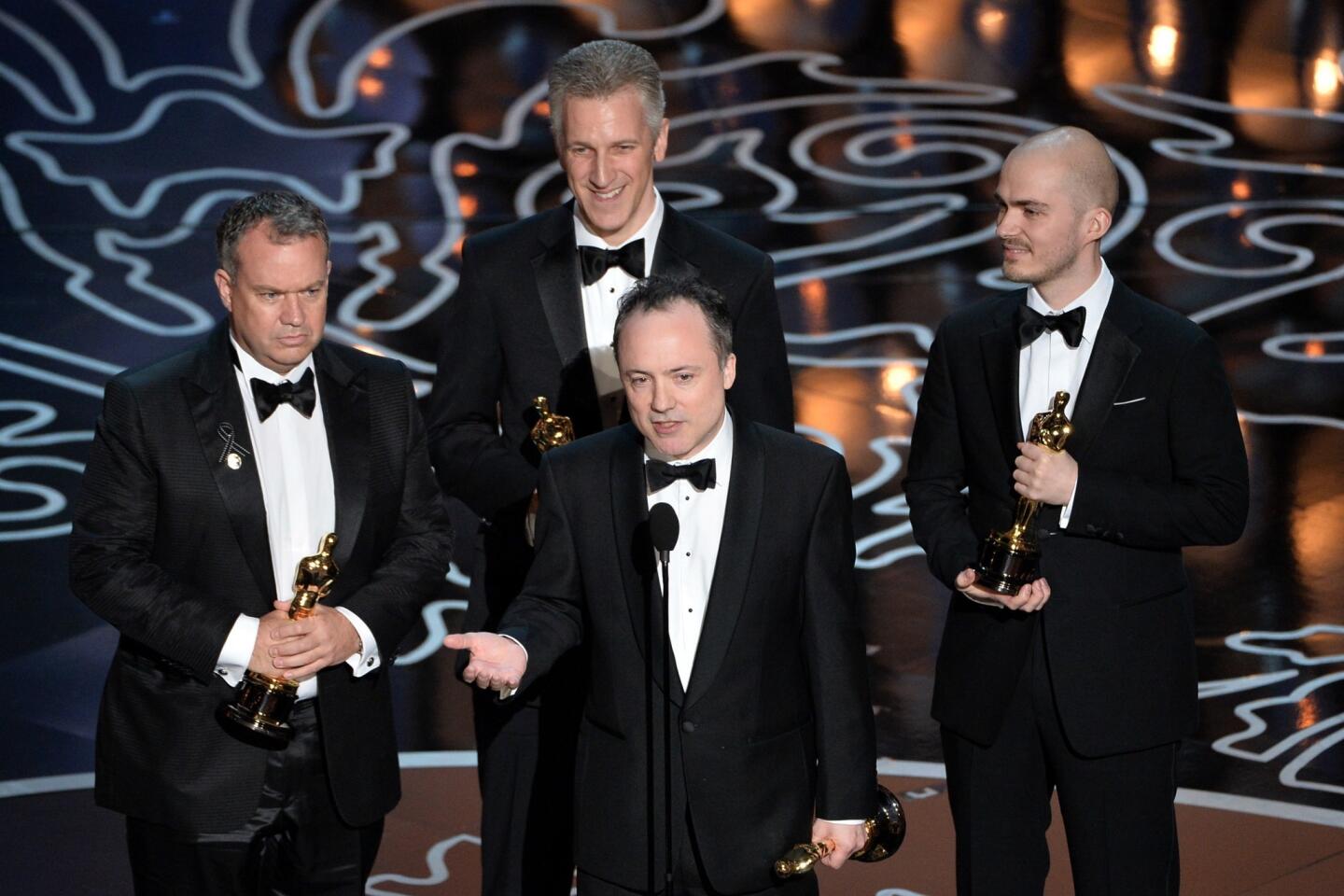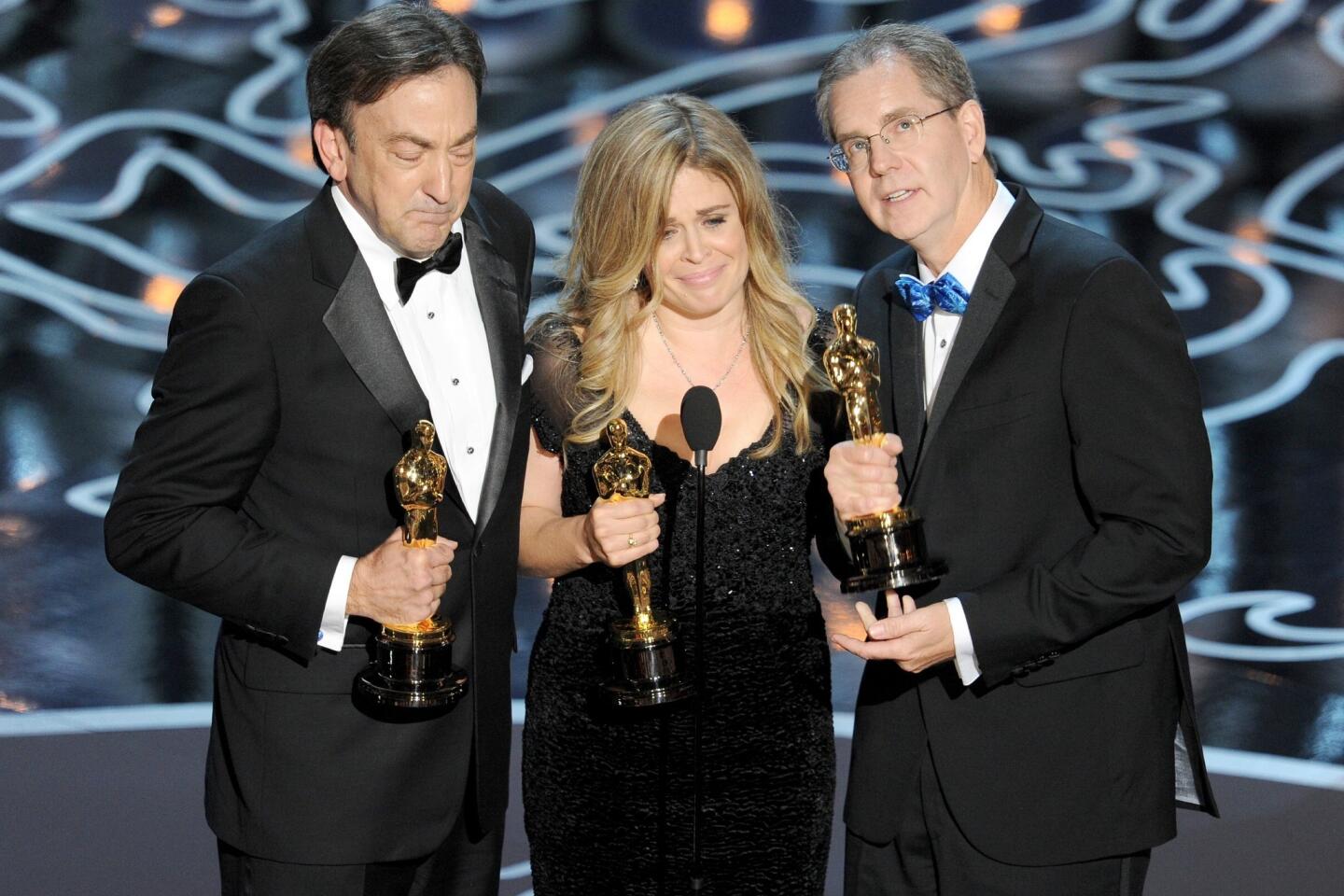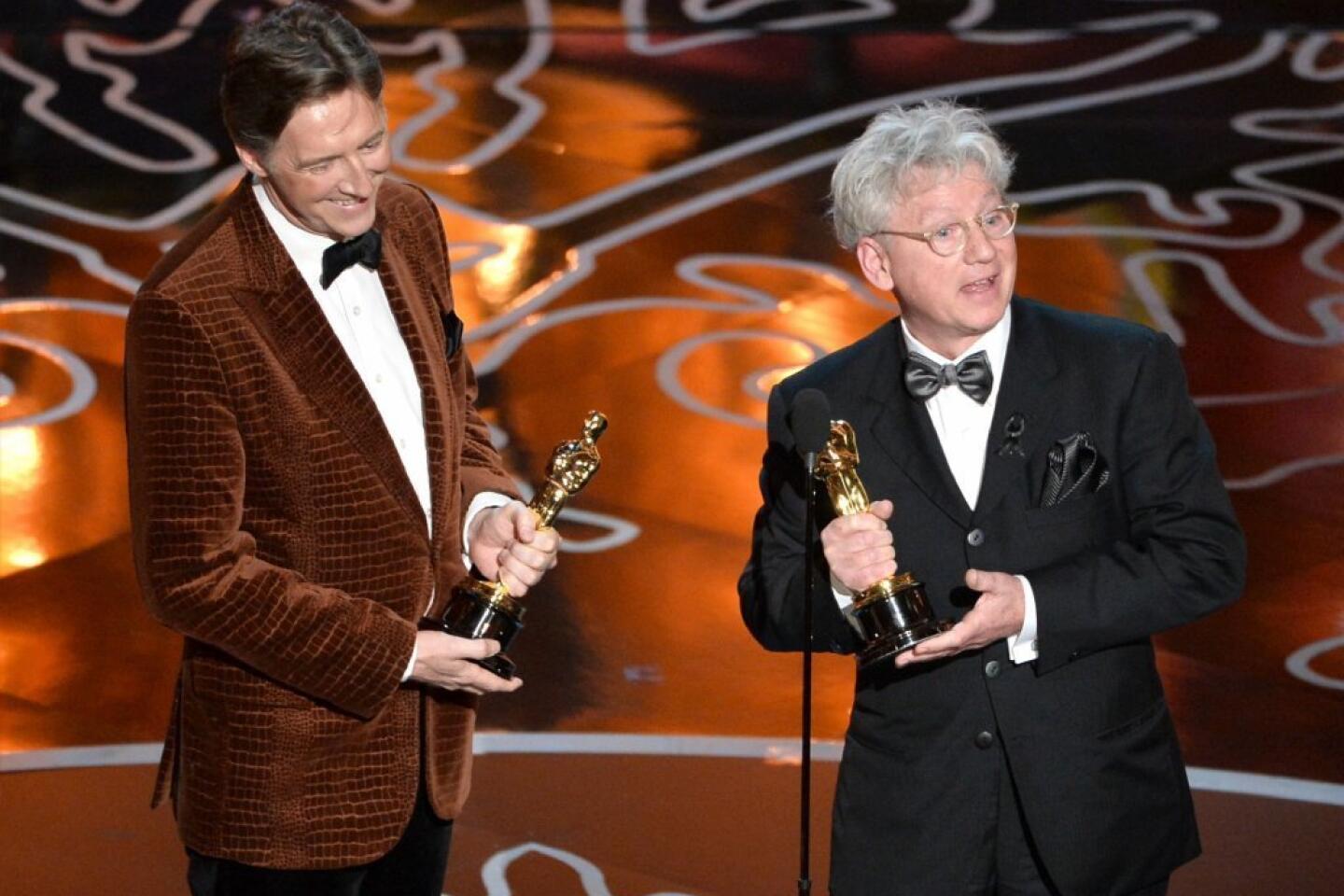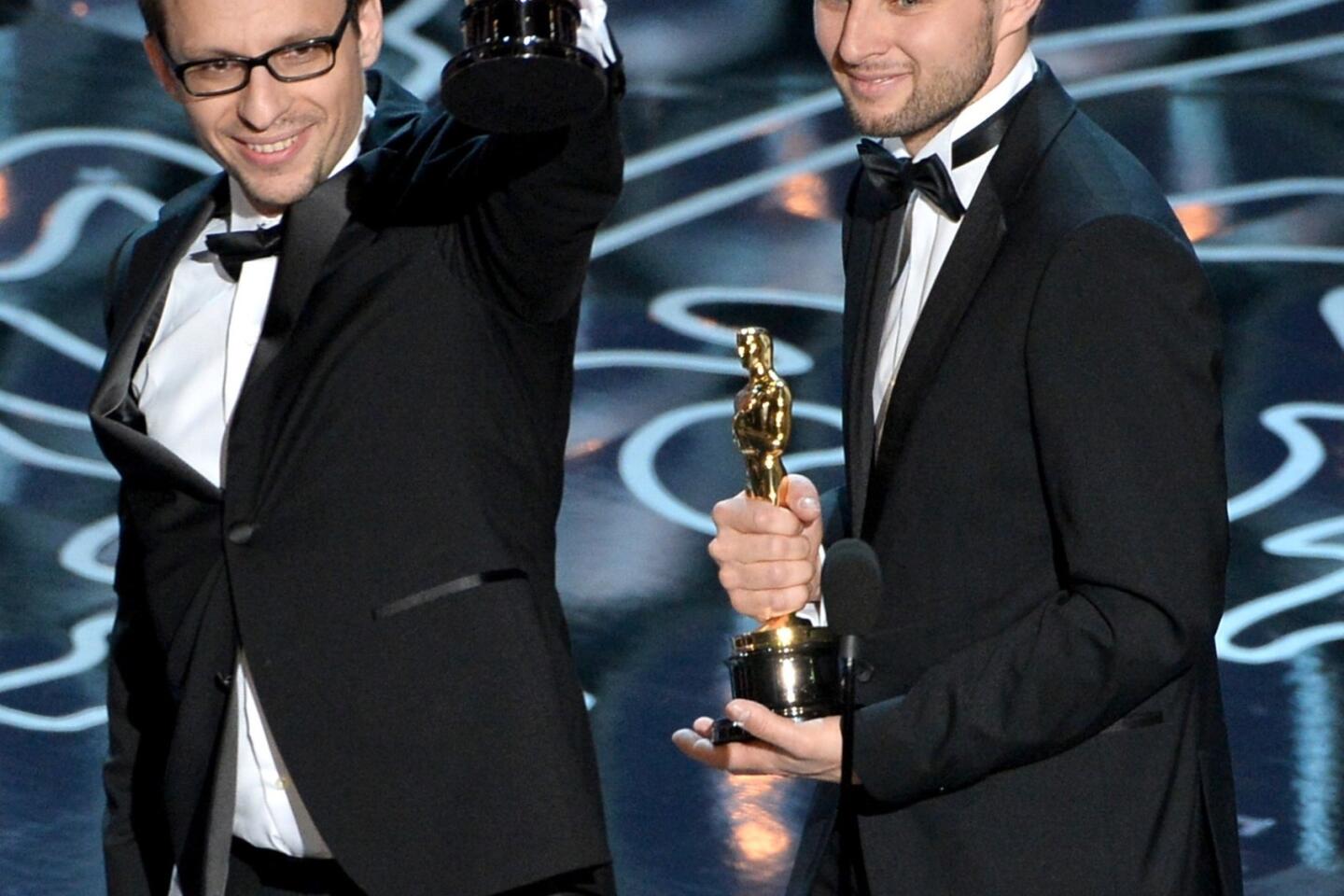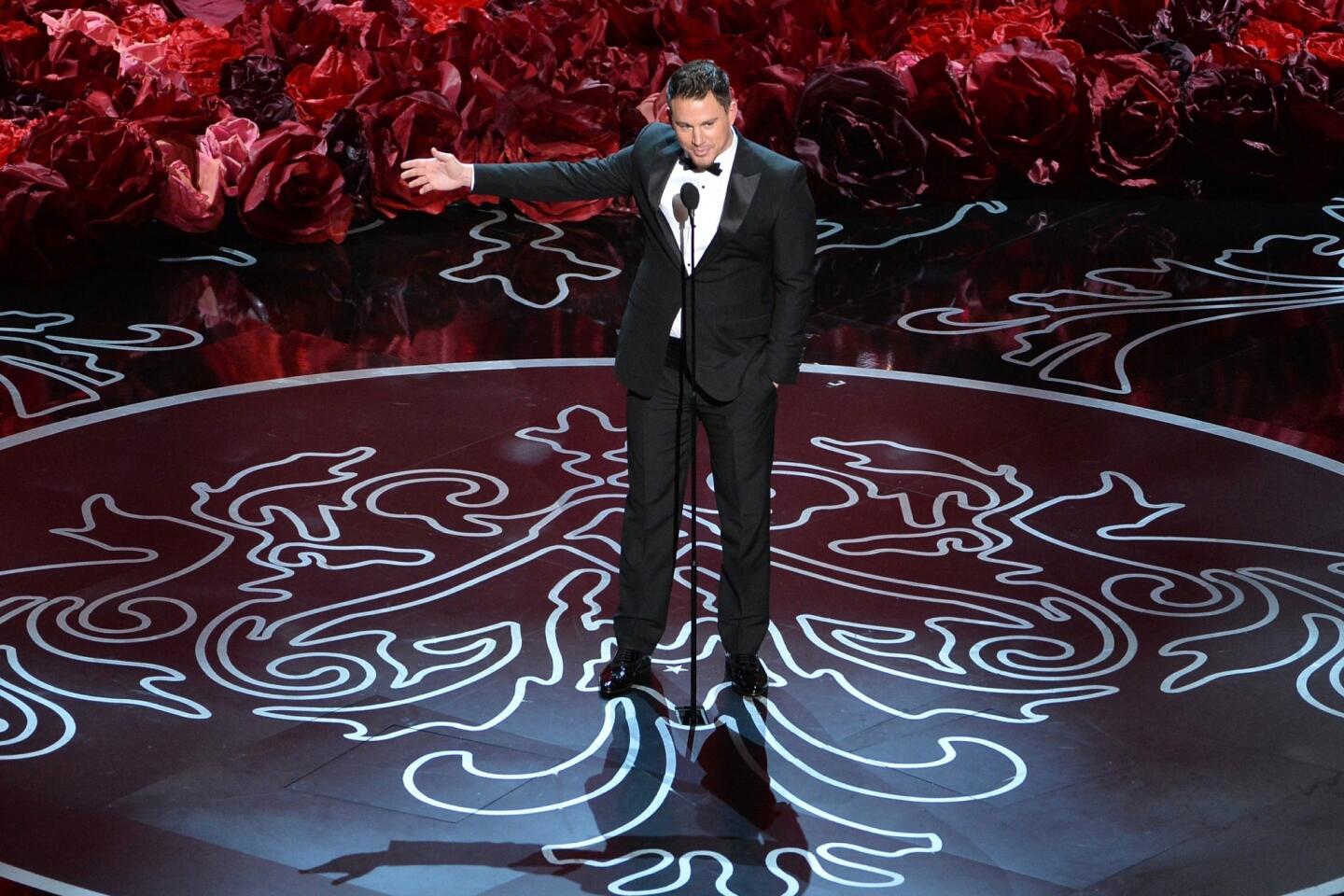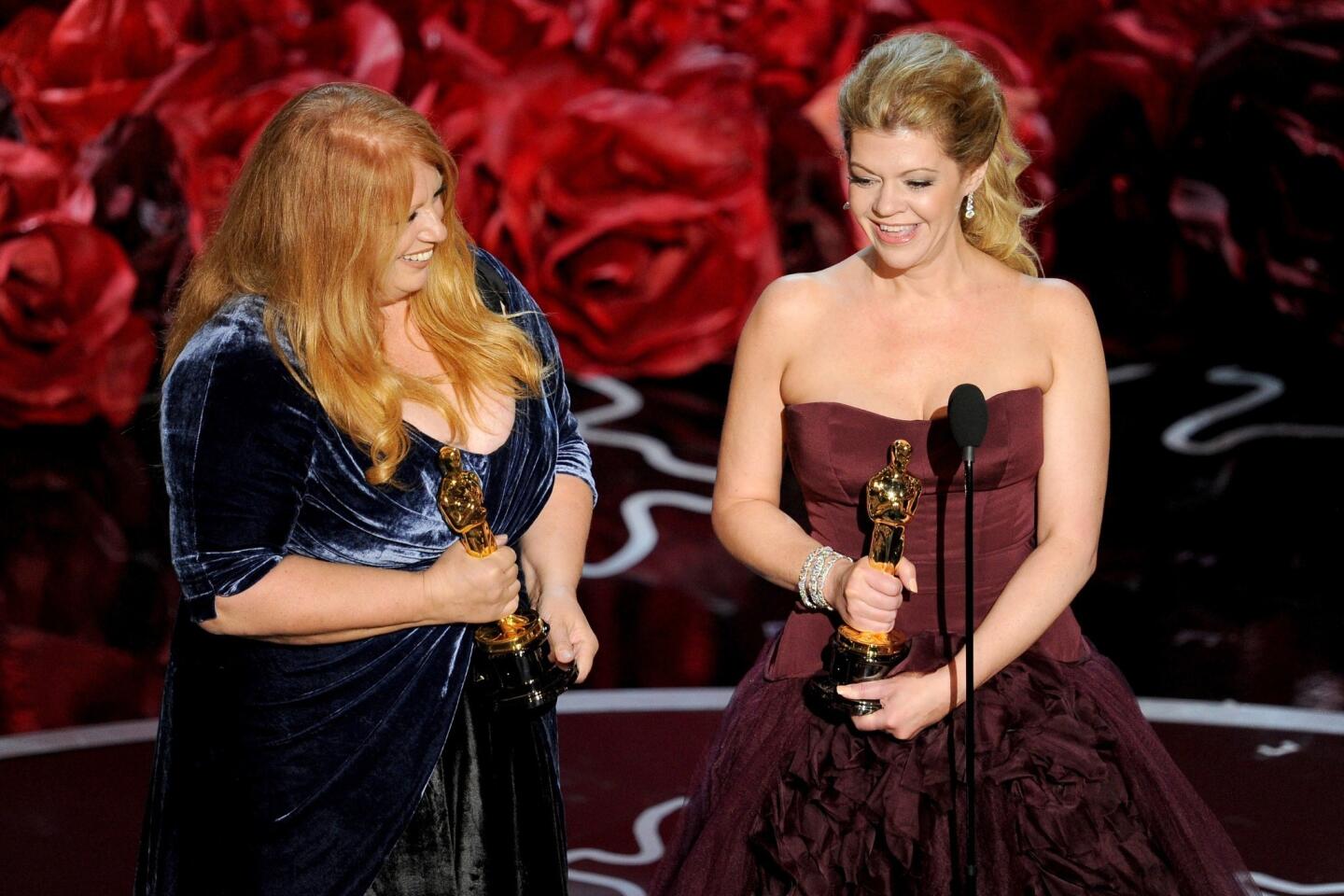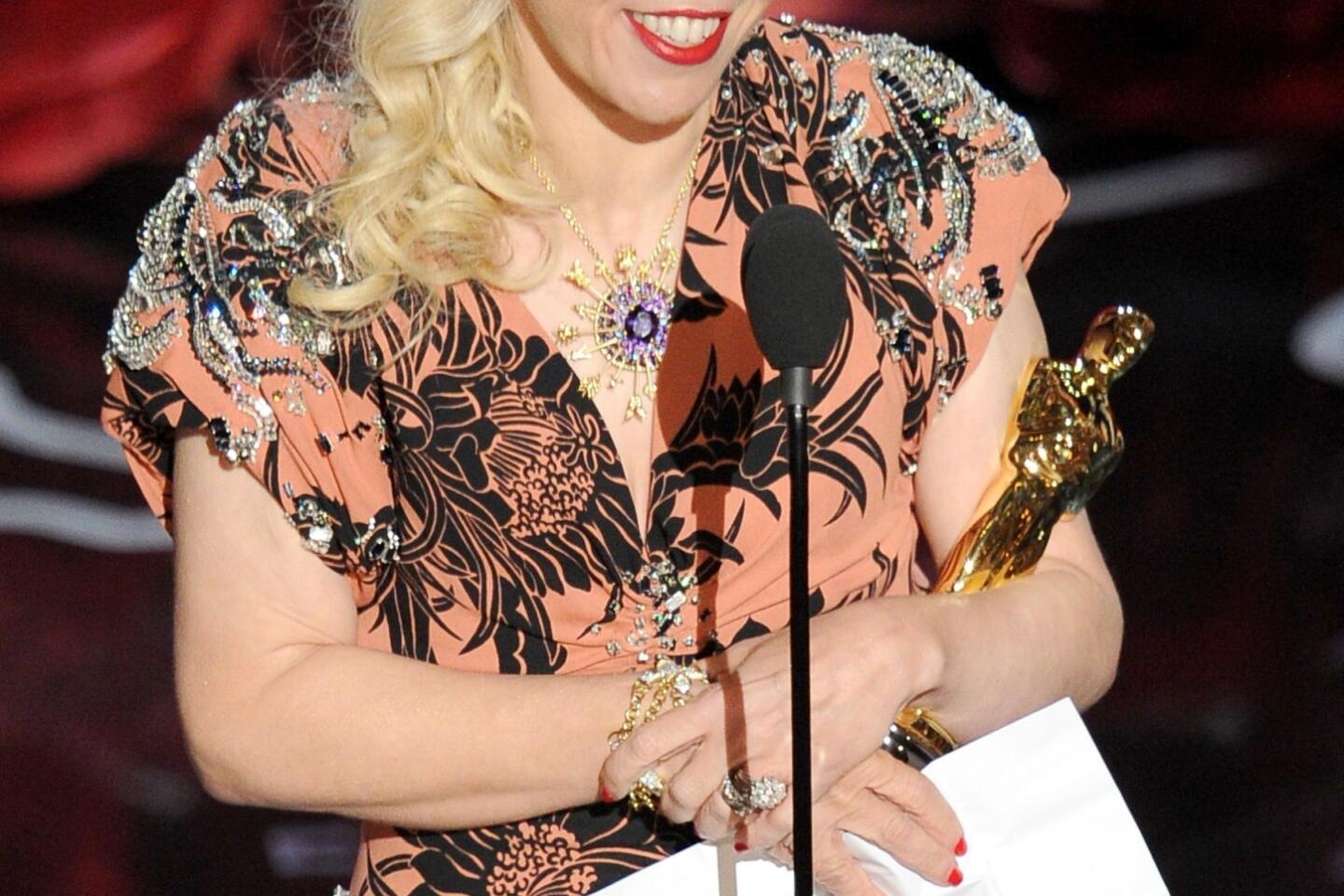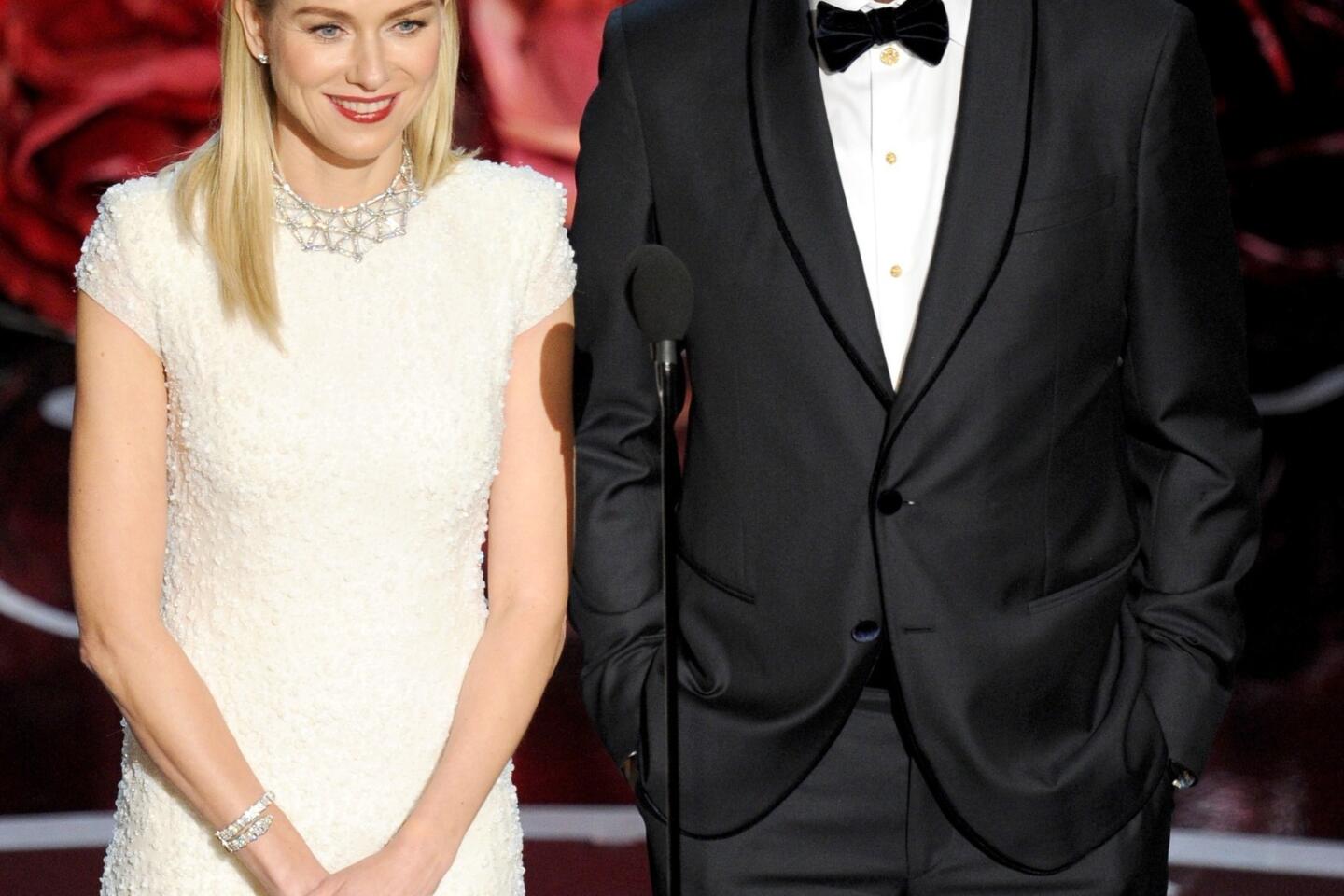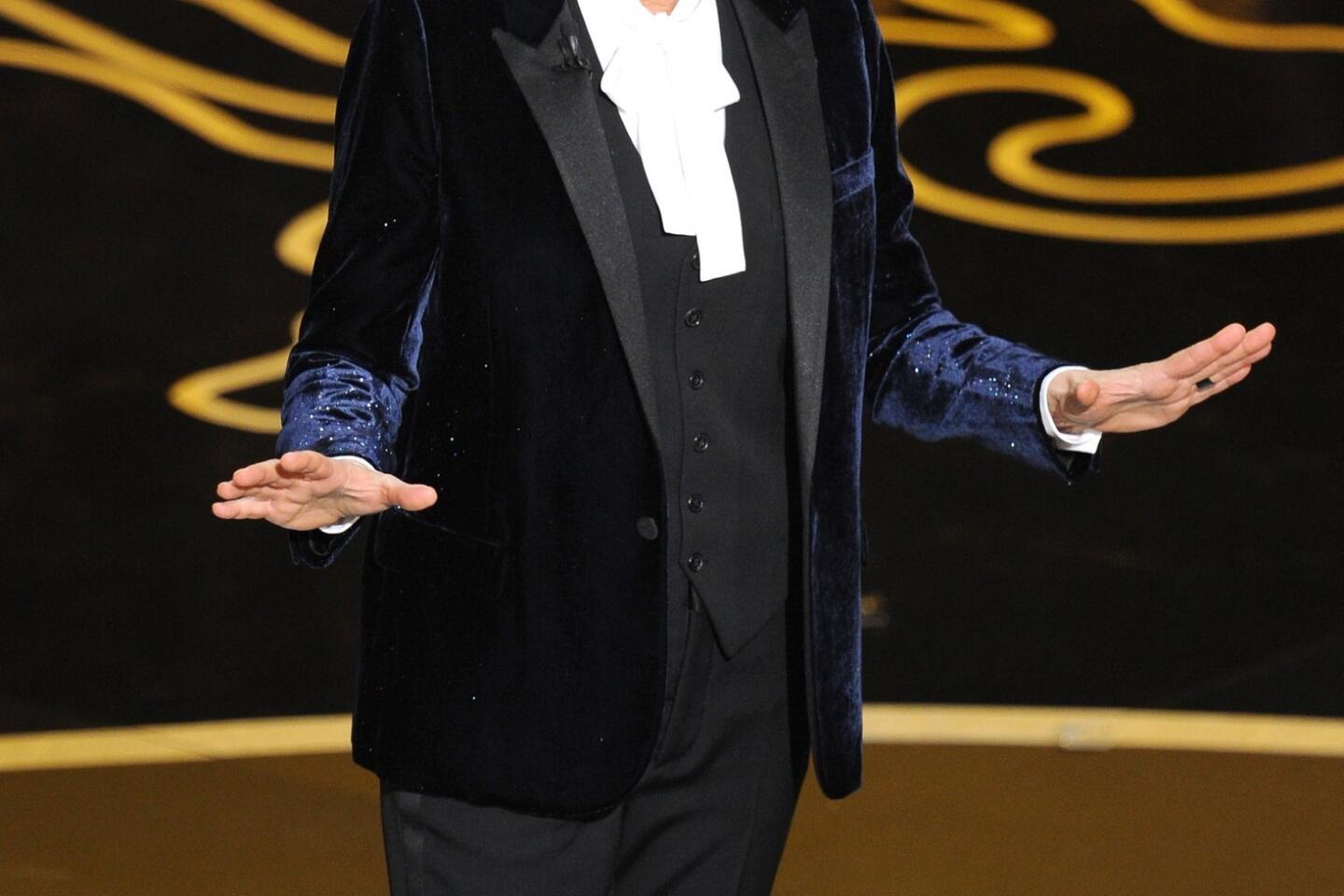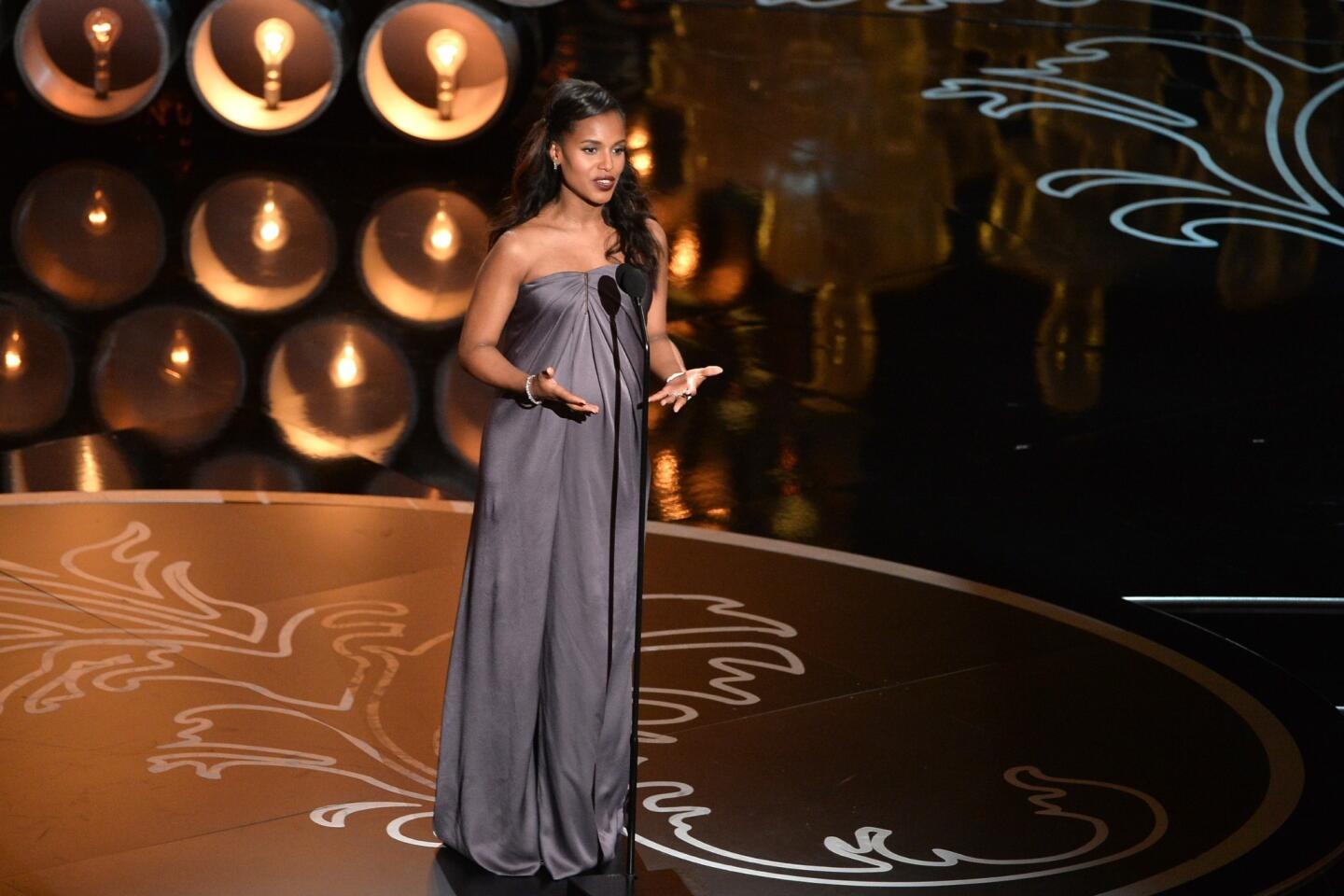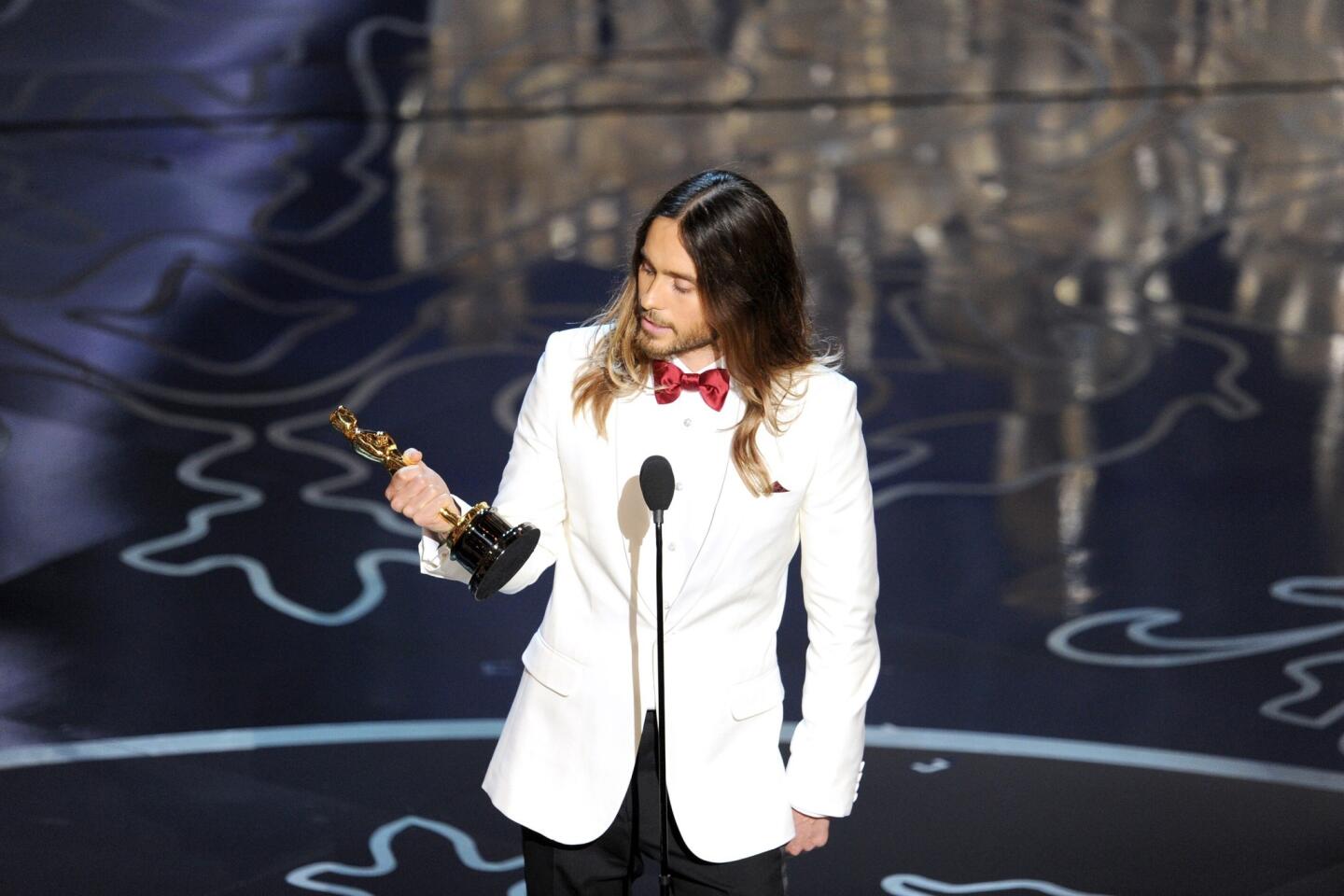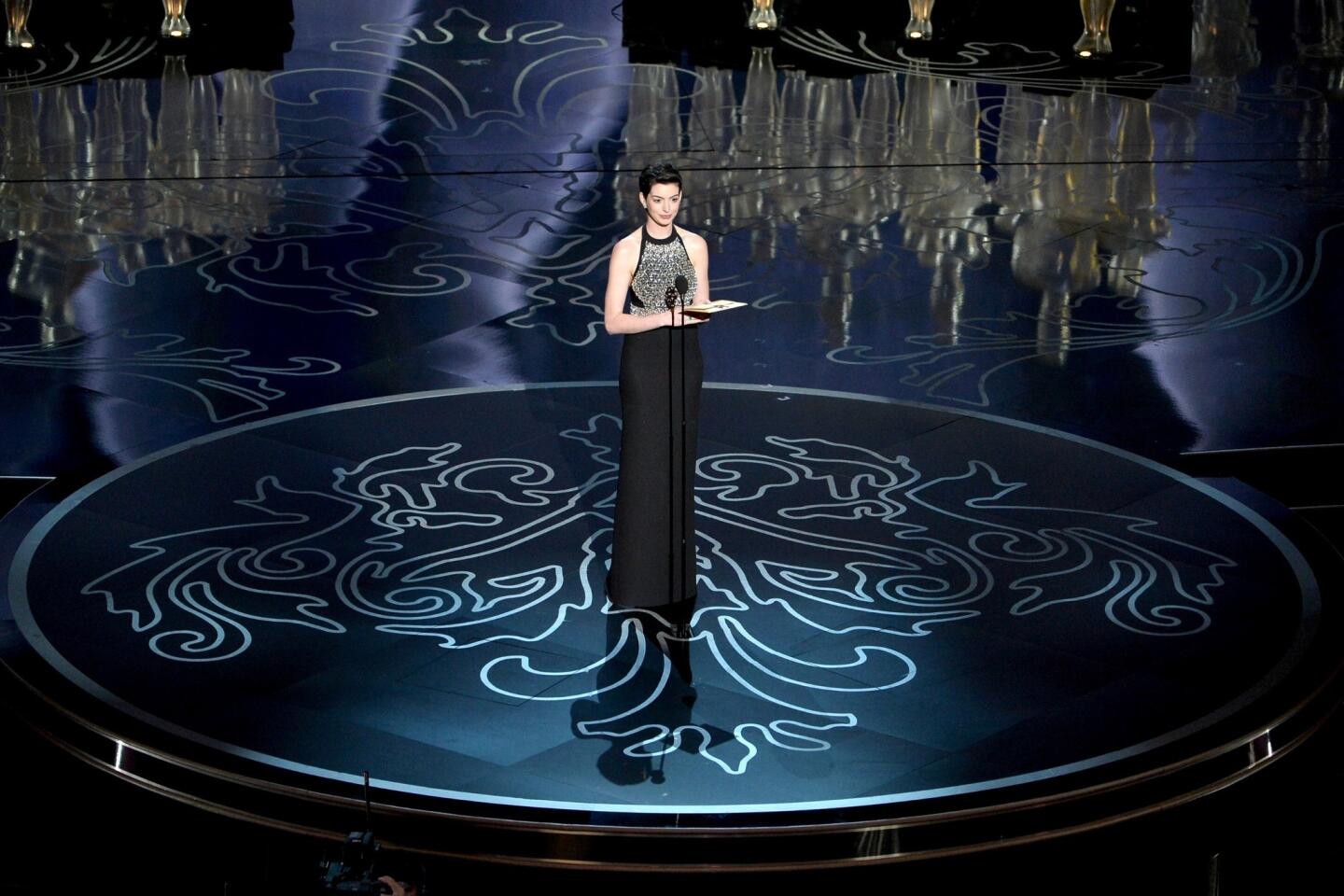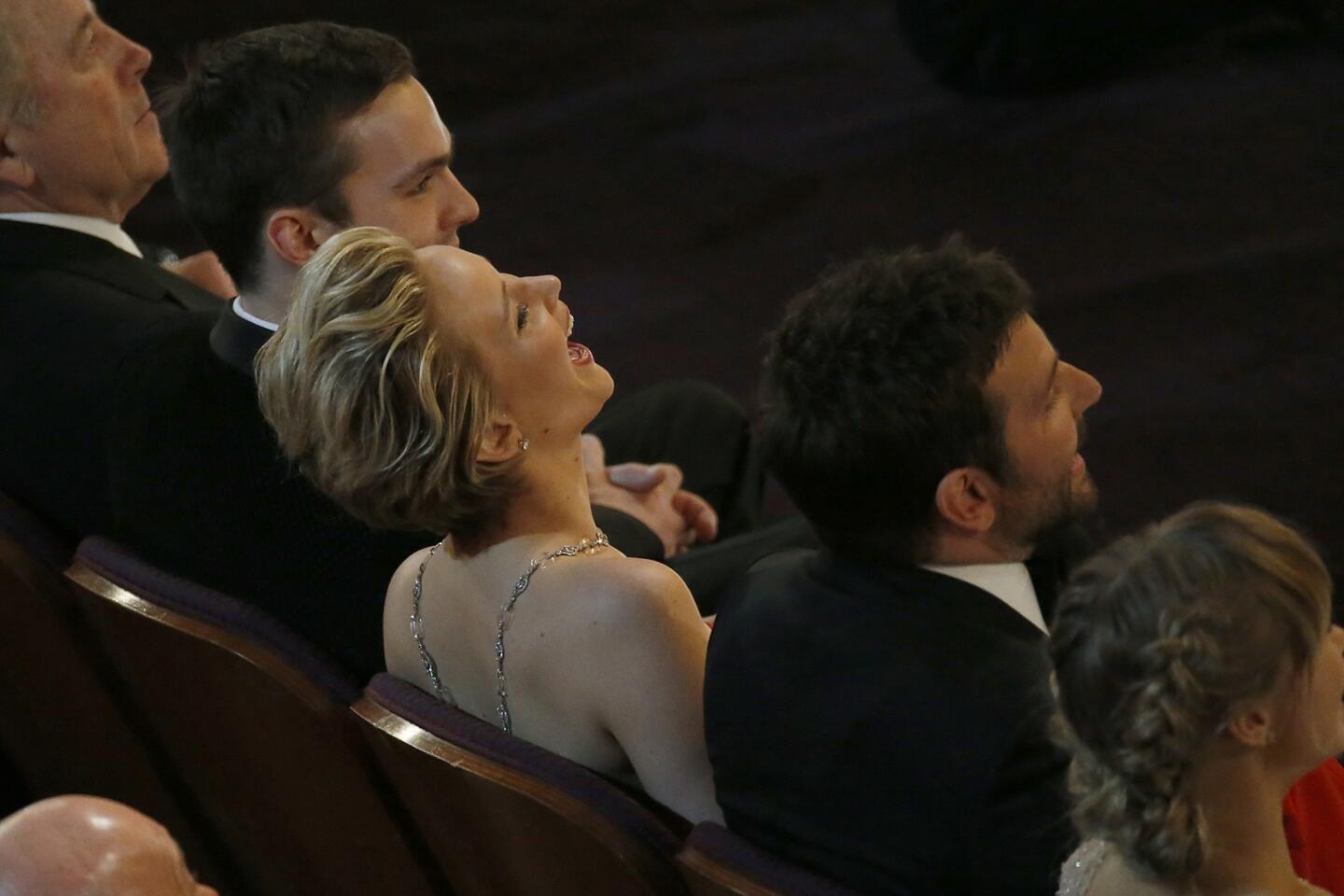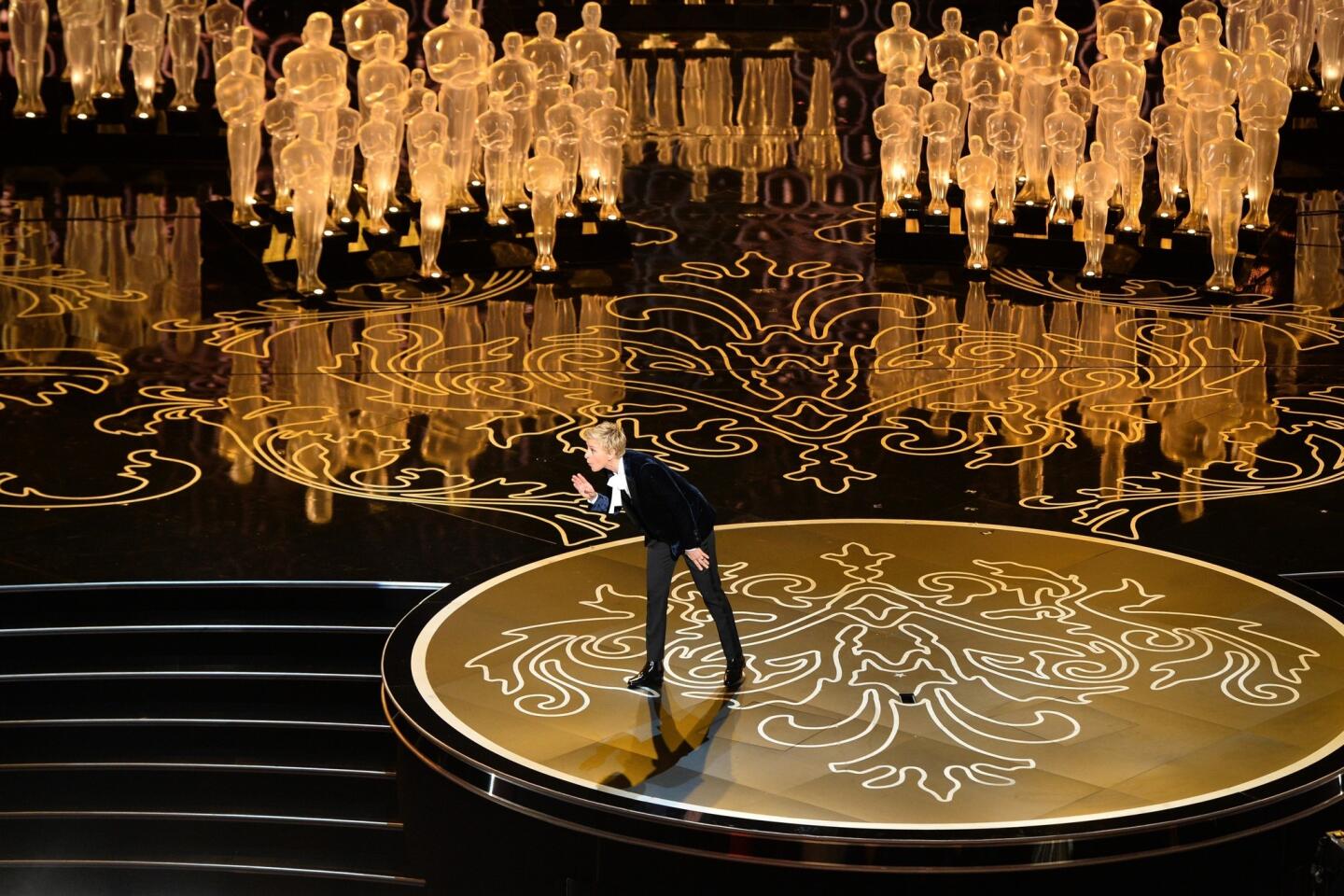Subtle shades of greatness frame cinematography nominations
Gray is the new black. Night, the new day. Rain, the new sun. Clouds gather, shadows linger. The Oscar-nominated cinematographers’ images fill the screen with a beauty only possible in worlds gone monochromatic, turning the most elemental of color palettes stunningly rich, subtly vibrant. Incredible combinations of charcoal, smoke, gunmetal and slate.
Philippe Le Sourd for “The Grandmaster,” Emmanuel Lubezki for “Gravity,” Bruno Delbonnel for “Inside Llewyn Davis,” Phedon Papamichael for “Nebraska,” Roger A. Deakins for “Prisoners” — veterans all. Men all.
And though they each have the capacity to shoot softness and light, the varied universes captured through their lenses this year speak to the wonder of black. From the endless midnight of space pin-pricked by stars in “Gravity” to the sweeping horizons of “Nebraska” above fields gone dead and dry — there are emotional stories spinning through all those subtle shadings.
Oscars 2014: Play-at-home ballot
I couldn’t be happier with the choices the academy made this year. It represents a deep bow to the sheer artistry that is cinematography. For all of the directing the director does — and I certainly would never underestimate that guiding hand — the cinematographers are the fine tuners of light and shadow, the master craftsmen of intimacy and distance, space and time. When the director says, “Here,” they figure out how.
This year the group is eclectic, international, their early aesthetics framed by childhoods in France, Greece, Mexico and Britain. Though they’ve all been shooting a while, for some, like Le Sourd and Papamichael, it is their first Oscar nomination. At the other end is Deakins, whose nomination for “Prisoners” is his 11th.
Consider a distinguishing feature of each:
French cinematographer Le Sourd’s “The Grandmaster”: The opening scene alone might be worthy of the win. A massive martial arts face-off in the dark of night, in the rain, a ballet of the animate and inanimate colliding with incredible grace. The architecture of each blow is a study in framing, but it is the rain — drops kicked up in great arches — that is absolutely mesmerizing.
TIMELINE: The Academy Awards through the years
Mexican cinematographer Lubezki’s “Gravity”: A film that is anything but grounded, the remarkable look of “Gravity” is ethereal and free-floating, a perpetual midnight made luminous. Seamlessly moving between the infinite and the finite, so completely does the film wrap itself around you, it is as if we are just a heartbeat away. Space, in the most literal and esoteric sense, through Lubezki’s lens absorbs everything in sight. The formless plays off the sculpted to create in images the film’s underlying issue of what humanity can and cannot control, what is and is not within our grasp, what is solid, what is ephemeral, what is life.
French cinematographer Delbonnel’s “Inside Llewyn Davis”: A story in blues as much as anything else, its grit as lyrical as its sound. Delbonnel’s challenge is to meld great beauty with great ugliness, to mirror the dark spirit of rebellion and restlessness of the Coen brothers’ piece. Even the sprawl of John Goodman’s doped-up, nearly dead old jazzman on a dirty bathroom floor carries a sense of poetry — like a crime scene awaiting discovery, everything in its proper place. The way light and shadow play across Oscar Isaacs’ face, the insidious singer/songwriter at the film’s center, lingers longest. Emotions forever headed somewhere else, held just long enough in Delbonnel’s lens for us to glimpse them.
PHOTOS: Oscars 2014 snubs and surprises
English cinematographer Deakins’ “Prisoners”: There is exceptional detail to Deakins’ work in this unsettling revenge story. The imagery becomes a perfect visual counterpoint to a story filled with the vagaries of right and wrong; clarity in the face of confusion. It is a brutal film, whose grimness could have overwhelmed it. But Deakins’ way with darkness has long been exceptional. There is a reason he earned earlier nominations for films like “True Grit” and “No Country for Old Men.” This time the imagery is often the context, the way a grime-streaked face hovers in the frame, or a bruised body of a man curls up like a baby. The screen literally aches with pathos.
Greek cinematographer Papamichael’s “Nebraska”: An extraordinary ode to the American heartland. It is a perfect marriage of imagery and story, rural life disappearing in modern times, literally slipping through every frame. Papamichael creates a new-age Depression in the stripped-down starkness, closed minds surrounded by open fields, all in glorious black and white. The land itself speaks volumes. There is earth — covered by dying crops, dying grass, tramped down, weed-choked, roiled up — in nearly every scene. The ground as much as anything else is Bruce Dern’s costar. Step by step, a man heading toward the end, redemption just out of reach, the only thing sure and solid is what lies beneath his feet. From dust to dust, black and white in all its infinite shadings, Papamichael has created a masterpiece.
More to Read
Only good movies
Get the Indie Focus newsletter, Mark Olsen's weekly guide to the world of cinema.
You may occasionally receive promotional content from the Los Angeles Times.
